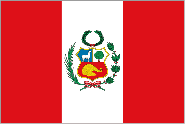Community
Taxonomy Term List
Solomon Islands Water Sector Adaptation (SIWSAP)
The impacts of climate change, particularly sea-level rise and pronounced droughts have severe consequences on water and sanitation in the country.
The areas which are most vulnerable to sea-level rise are low-lying islands, atolls and flat deltaic regions at the mouth of larger rivers. Intrusion of salt water from rise in sea level has affected groundwater resources, especially freshwater aquifers (lens) in small atolls and low-lying islands that rely on rainfall or groundwater for their freshwater supply. Droughts have severely affected water supplies and have also damaged crops and livelihoods.
Likewise, climate-related impacts on the quality and quantity of water has a gender dimension; in the context of the ethnic tensions, the safety and security of women and girls are compromised as they need to travel further to collect water, also leading to less time for other activities.
This project (2014 - 2019) focused on improving the resilience of water resources to the impacts of climate change, in order to improve health, sanitation and quality of life, and sustain livelihoods in target vulnerable areas.
For updates on UNDP Early Warning Systems and Climate Resilient Development projects, click here.
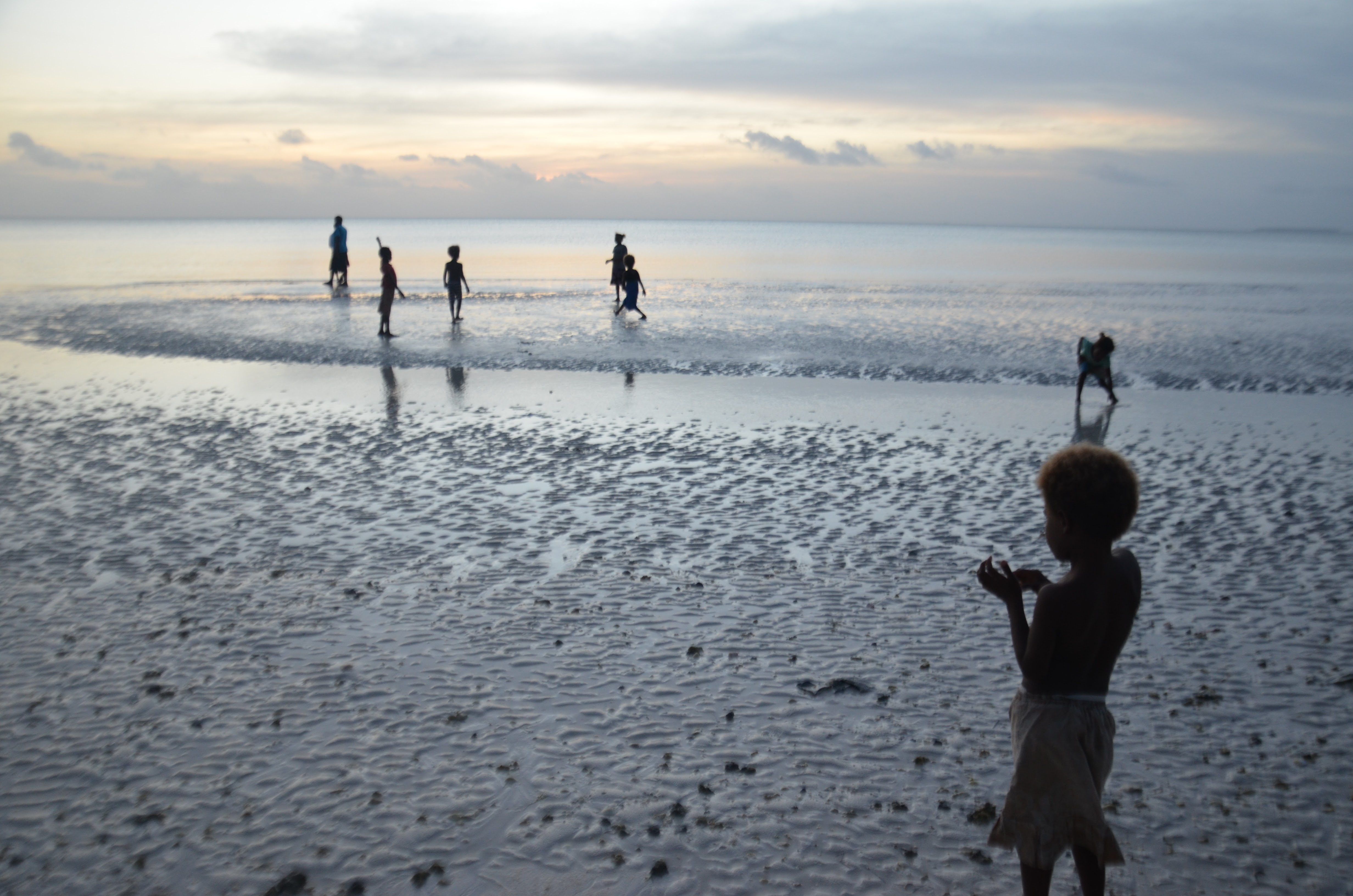
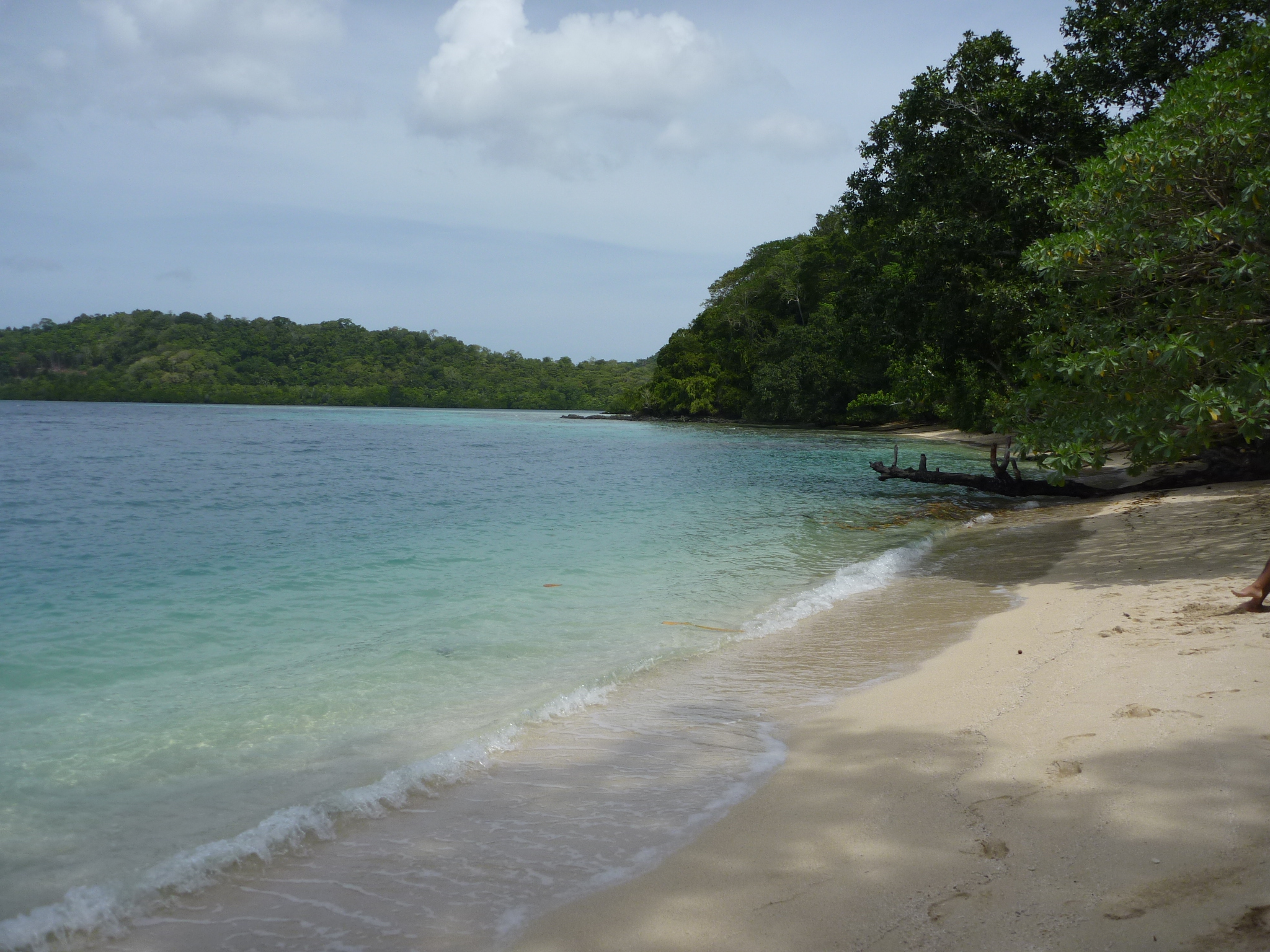
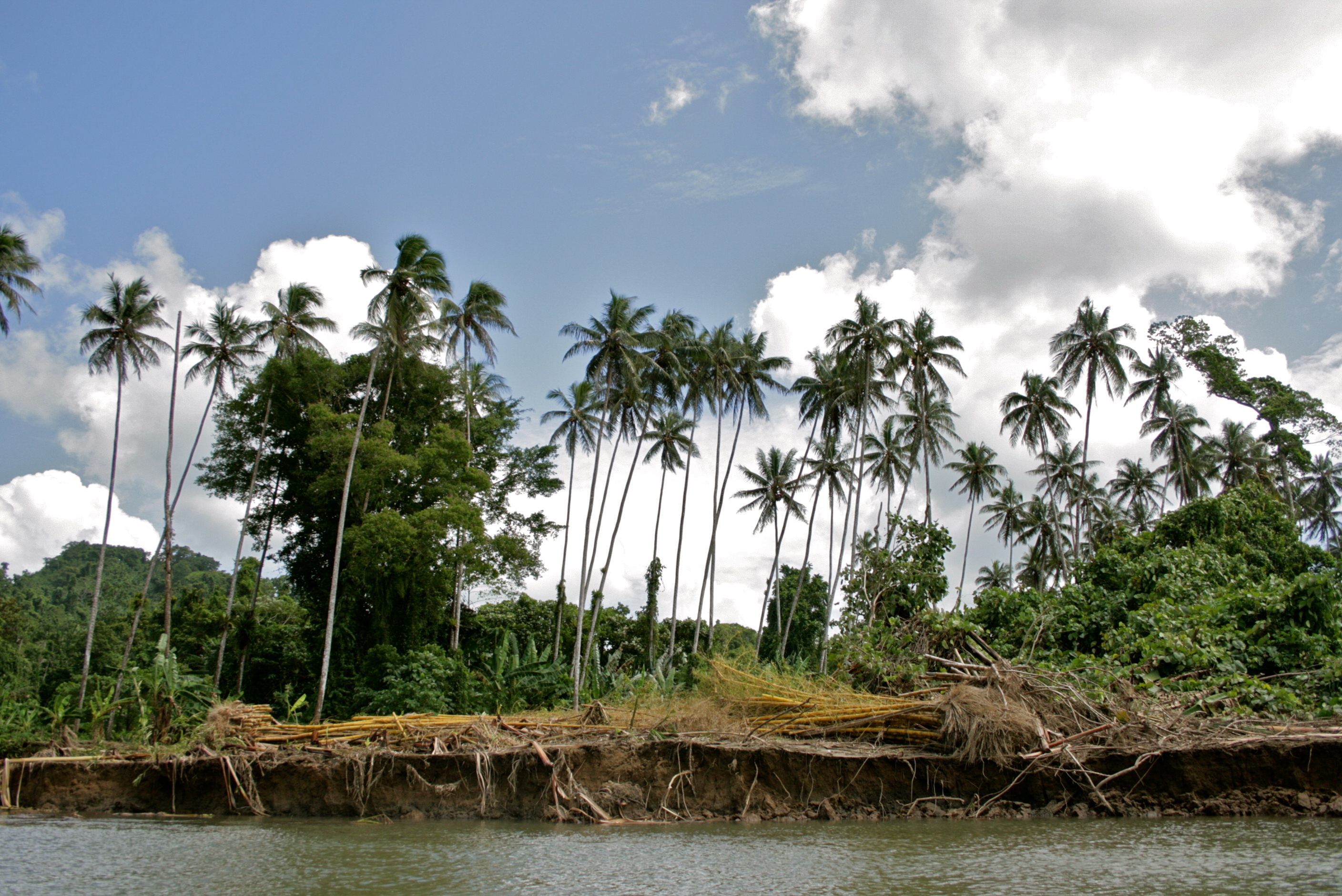
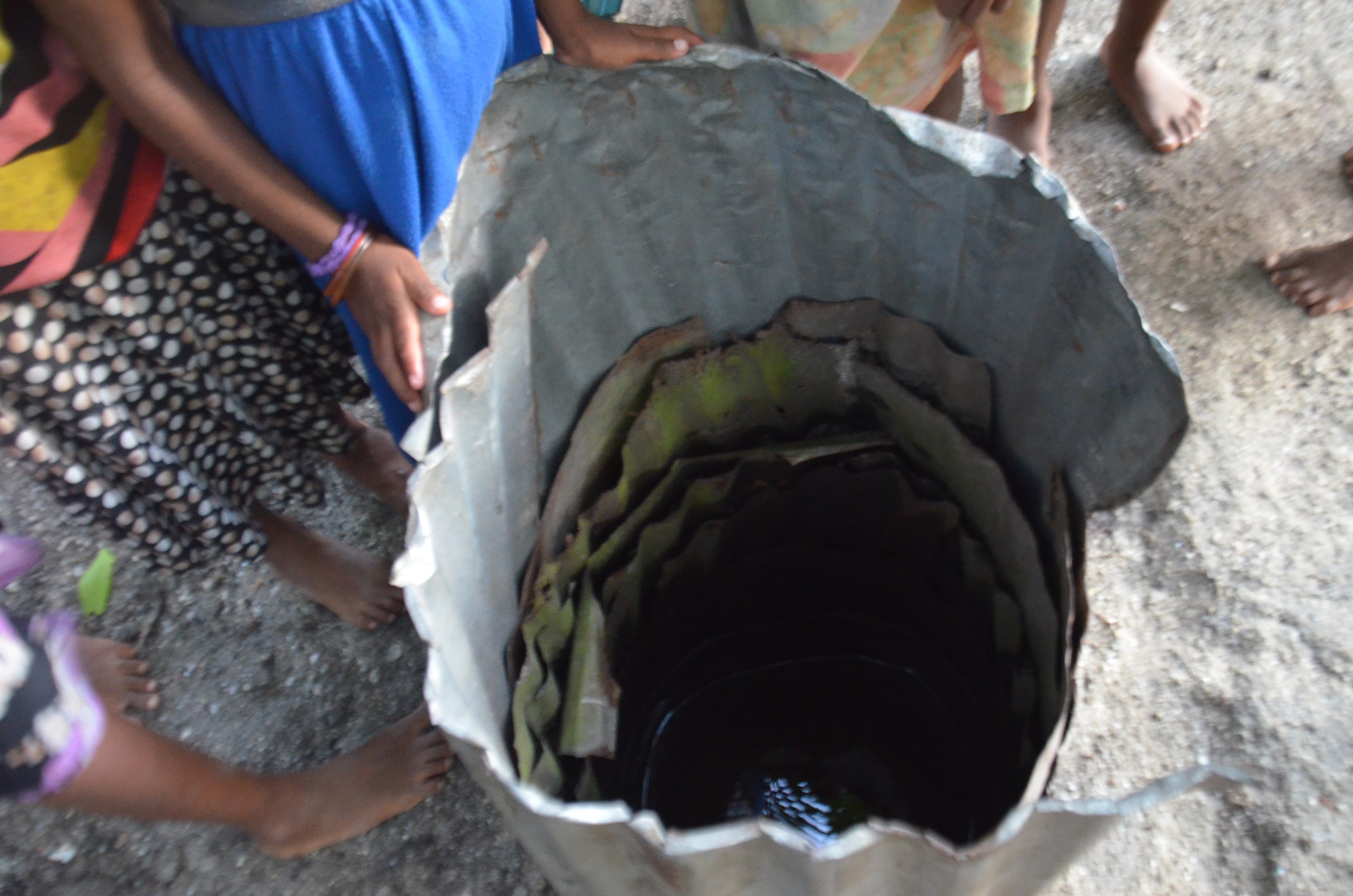
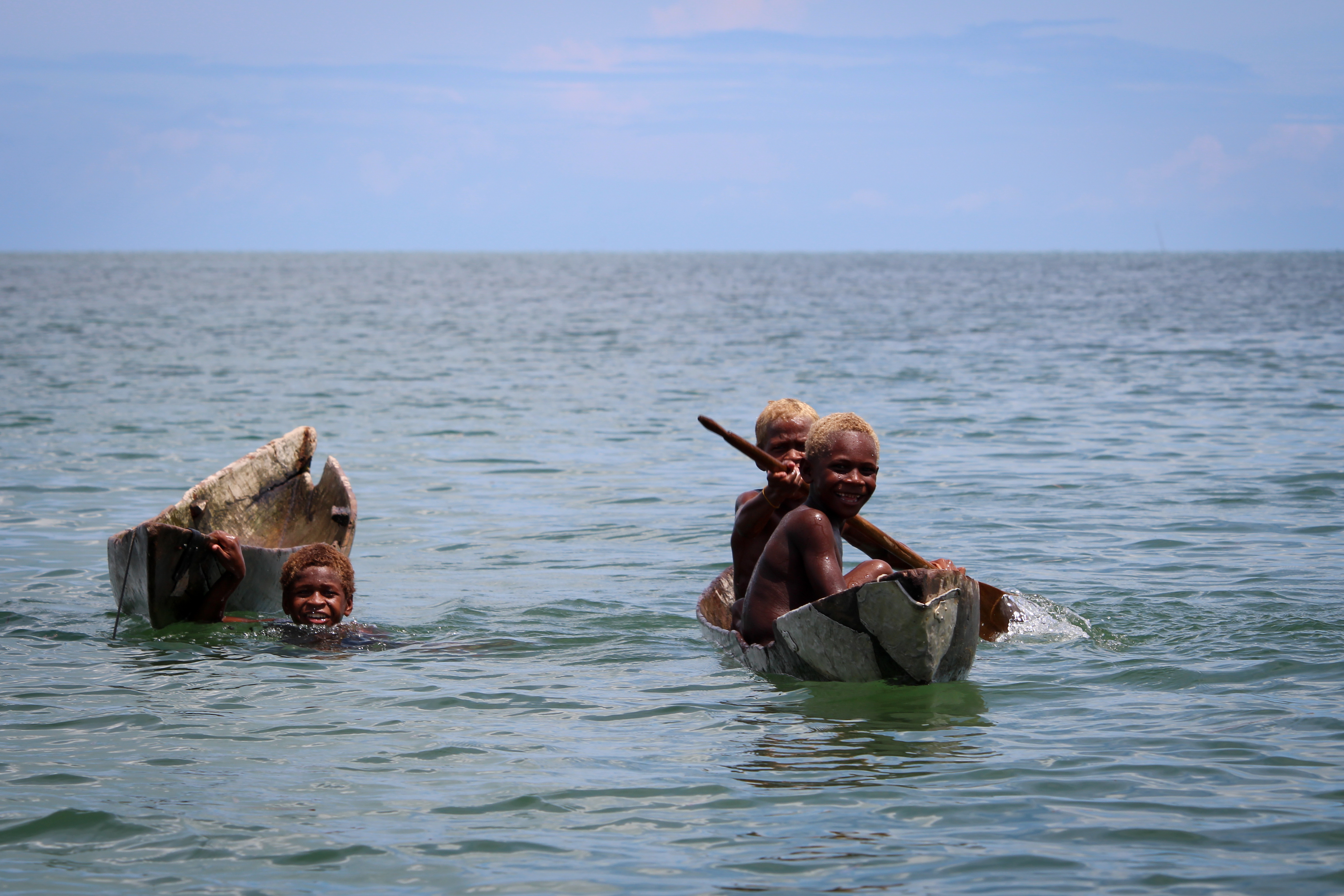
ProDocs
PIFs
Based on the LDCF resources requested and the scope of the climate change adaptation measures, the project will cover work in 6 pilot sites. On a national scale there are a number of benefits that this project will contribute to.
- More than 70% of the national population i.e. more than 360,000 people benefit from communal water systems and natural water sources and do not rely on government managed water supply systems. Many of these supply systems are dependent on water catchments and underground aquifers aquifers that are very sensitive to the hydrological cycle and its disturbances, most of which are related to climate change. Lessons from the project could be multiplied for the benefit of this population.
- Improvements to water supply will also result in more people having access to proper sanitation facilities, potentially reduce prevalence of disease and reduced costs to the people and to government’s social services
- UNDP estimates that water supply investment has an economic return of $4.4 to $1 while investment in sanitation has a return of $9.1 to $1. Some of the multiplier effects of investing in water and sanitation include; healthy workers, savings on medicines, bottled water not required, boost to agriculture and healthy tourists
- Increasing preparedness and enhancing resilience of the water sector to extreme events can potentially reduce the cost to government for disaster relief. Over the past few years flooding, king tides, excessive rainfall and storm surges have rendered rural locations and communities as disaster areas with the frequency of calls for disaster relief assistance from the national government reaching levels never before experienced in the country since it attained political independence in 1978
Outcome 1: Integrate water conservation and sustainable water resources management in all sectors and communities.
The outputs include: construction of village/community water tanks; construction of water reservoirs for institutional and residential areas; upgrading of existing reservoirs, protective structures/access roads; promote/build household rainwater harvesting; construction of strategic storage water reserve tank; engineered or “climate proofed” water reservoirs; develop and implement Water Use efficiency Plan; raise awareness for water conservation.
Outcome 2: Incorporate climate change adaptation strategies into the guidelines and criteria for design and construction of appropriate water infrastructure in vulnerable areas.
The outputs include: guidelines for development of water supply in rural areas developed; inventory of POPs and adequate storage and leakage prevention conducted; good practice guidance for pesticide storage and use, and application developed and used; drought and its effect on water distribution in rural areas assessed; rainwater harvesting technologies developed and used.
Outcome 3: Increased reliability and quality of water supply to all sectors and communities
The outputs include: capacity of water supply increased; water reticulation and distribution systems improved and where necessary constructed; arable land improved and rehabilitated; sustainable use of water on commercial agriculture land; build appropriate low-technology irrigation system for farmers; diversification food crops with a focus on high-yielding crop varieties promoted; promote water conservation and water use efficiency; prevent land-based pollution.
Outcome 4: Enhanced institutional and legal framework for water resources management
The outputs include: individual and institutional capacity for sustainable water management built and/or enhanced; water resources sector policy developed and implemented; water resources sector legislation developed and adopted; water sector plans and programmes developed and implemented.

Championed by the Government of the Solomon Islands through the Ministry of Mines, Energy and Rural Electrification (MMERE) Water Resources Division (WRD) in partnership with Ministry of Environment, Climate Change, Disaster Management and Meteorology (MECDM), and other line ministries, SIWSAP activities are designed to ensure access to safe and affordable drinking water and increase reliability and quality of water supplies in targeted areas. Longer-term project measures are working to integrate climate-resilient water management in policy and development frameworks; encourage investments in cost-effective and adaptive water management technologies; and improve governance and knowledge management for climate change adaptation in the water sector at the local and national levels.
Tuvalu Coastal Adaptation Project
Under the Tuvalu Coastal Adaptation Project (TCAP) the Government of Tuvalu is implementing measures to reduce the impacts of climate-induced sea level rise and intensifying storm events on key infrastructure.
Building on existing initiatives, and using a range of measures for coastal protection - including eco-system initiatives, beach nourishment, concrete and rock revetments, and sea walls - the project focuses on building coastal resilience in three of Tuvalu’s nine inhabited islands. A total of 2,780m of high-value vulnerable coastline, with houses, schools and hospitals, will be protected from increasingly intensive wave action and coastal inundation.
Building national capacity for resilient coastal management is also a key focus of the seven-year project, set to be completed in May 2024.
It is expected that the project will help to catalyse additional coastal adaptation finance from other donors.
Visit the project website https://tcap.tv
PIFs
Tuvalu is the fourth smallest nation in the world, comprising nine inhabited islands with a population of 10,640. With an average elevation of only 1.83 meters, it is one of the most vulnerable countries in the world to the impacts of climate change. The combination of two manifestations of climate change – continually intensifying cyclone events and sea level rise – threaten to have dire impacts on Tuvalu. In 2015 Cyclone Pam displaced 45% of the population. The purpose of this project is to reduce the impact of increasingly intensive wave activity, through the compounding effects of sea-level rise and intensifying storm events, that is amplifying coastal inundation and erosion. It is evident and well accepted that the effects of climate change will only worsen coastal inundation and erosion in Tuvalu. This project will increase the coverage of coastal protection from the baseline 570m to 2,780m benefiting nearly 29% of the entire population. Investments on coastal protection are directed at coastlines in three islands (Funafuti, Nanumea and Nanumaga) along areas that have a high concentration of houses, schools, hospitals and other social and economic assets (henceforth referred to as “high-value” coastline).
Despite the extreme level of vulnerability, Tuvalu currently does not have a single engineered coastal protection infrastructure project that is designed to withstand current and future impacts of sea-level rise and intensifying tropical storms. The only exceptions are two interventions that are currently being designed for a length of 570 m in Funafuti and Nukufetau. The combined factors of high upfront investments required for coastal protection, the public good and non-revenue nature of the required solutions, and the inability of the Government to service loans, have permitted the Government and the community to implement the recognized solutions only at a slow pace and in a highly fragmented manner in the past. Because available resources are generally far smaller than what is required for implementing appropriate response measures, the past initiatives have often resorted to community-scale interventions that hardly withstand the current wave energy, let alone integrating climate change risks into the design. Without support, this sub-optimal practice is likely to continue for the foreseeable future. This project is proposed so that Tuvalu can, finally, take comprehensive and systemic steps to manage coastal inundation risks.
Output 1: Strengthening of institutions, human resources, awareness and knowledge for resilient coastal management.
- Technical capacity, knowledge and awareness strengthened for monitoring, protection and maintenance of coastal protection infrastructure.
The jurisdiction of coastal protection is shared across the Department of Lands and Survey (DoLS), Public Works Department (PWD) and Department of Environment (DoE). However, none of these departments currently have the technical capacity to monitor the dynamic processes of coastal change over time nor the capacity to design potential coastal interventions. Nor is there sufficient capacity within the Climate Change Policy Unit (CCPU) to coordinate the work of these departments for effective coastal protection. Due to this limitation, the Government is not able to carry out vulnerability assessments, site assessments and coastal design, make informed decisions about pragmatic solutions for coastal protection, and identify potential funding sources for implementation. Instead, they generally have to wait for a donor, often with particular areas of financing priority, to approach them. This lack of ability to carry out a preliminary technical assessment contributes to an increasing sense that the issue is out of their control and eventually to limited ownership. Further, although the CCPU was newly established in 2015 to coordinate government’s actions for climate change adaptation and mitigation, medium- to long-term capacity building efforts are needed in the technical areas of climate change, coordination, project design and management, financial management, knowledge management and reporting.
- Long-term national human resource capacity and awareness enhanced for sustainable coastal protection
In the specific context of Tuvalu, the capacity building support conventionally delivered in donor-supported projects has been insufficient to establish a foundation for sustainability. This is because typically the capacity building support in these projects is exclusively targeting the existing government staff, which is small in number, and the progress is immediately undone if the staff members leave the government system. This approach to capacity building represents numerous missed opportunities for transforming the country. Climate change adaptation is defined by UNFCCC as a series of “adjustments in ecological, social, or economic systems in response to actual or expected climatic stimuli and their effects or impacts” and by nature, it is an iterative, long-term process. Adaptation efforts in SIDS like Tuvalu must embrace, in their core principle, a strategy to build capacity of the entire country that goes well beyond that of the government system.
Output 2: Vulnerability of key coastal infrastructure including homes, schools, hospitals and other assets is reduced against wave induced damage.
- Coastal protection design, site-specific assessments and ESIA undertaken in all islands in a participatory manner
A detailed, participatory design and site-specific assessment will be carried out in all the islands in Tuvalu. This process is needed not only to make final adjustments in the design of the coastal protection measures (such as the angle of the structure and protection of the toe of the structure) to maximize the effectiveness and longevity of the structure for the three targeted islands, but also to equip the other, non-targeted islands, with the necessary information for attracting donor resources in the future, including from GCF. The multi-stakeholder, gender-responsive planning and design process will take place to ensure that beneficiaries are fully informed and are able to contribute to the detail design and functionality of the coastal protection measures in each of the islands. The process will, for example, look into how the target community (men, women, youth, and elderly) interacts with the ocean and coastline, which is an important design element of coastal protection infrastructure. The assessment will result in a set of adaptation options, detailed technical drawings, bill of quantity, tender documents and detailed costing of the interventions. As described earlier, this process will be used as an opportunity to provide hands-on trainings for government staff from the DLS, PWD and DoE.
Resources will be used to put in place a robust coastal protection infrastructure along 2,210m of vulnerable coastlines of Funafuti, Nanumea and Nanumaga to defend high value assets of the targeted islands. This translates to targeting nearly 28% of the high value zone of the country, which currently has no protective measures. Also this represents 10% of all vulnerable coastlines in the country. The design criteria are set such that the design will reflect the projected sea level rise and notional 200-year return period storm surge events. Geo-textile container revetments in Nanumea and Nanumaga will have minimum design life of 25 years; but, with the appropriate selection of vandal resistant bags for the top layer walls and, training of PWD and community members for monitoring and simple repair, the life expectancy is expected to be longer.
Output 3: A sustainable financing mechanism established for long-term adaptation efforts.
- All Island Strategic Plans and annual budgets integrate island-specific climate risks through gender sensitive, participatory processes
Successful climate risk mainstreaming into ISPs and effective use of available domestic financing will facilitate island-led actions, enhance planned and autonomous adaptation, and ultimately, increase resilience at the island level. In the context of coastal interventions envisaged in the GCF project, a strengthened ISP process will improve longer-term impact and replication potential of the GCF investments as domestic resources, allocated through ISPs, are expected to be used to maintain the GCF investments and to expand the coastal protection coverage. For the expansion of coastal protection measures beyond donor-assisted projects, lower-cost ecosystem-based approaches are a more realistic option given the limited available finance domestically. This activity will strengthen the critical foundation to facilitate this process.
- Capacity of Kaupules, Falekaupules and community members strengthened for monitoring coastal adaptation investments
This project will also be used to strengthen the capacity of both outer island administrations and community members for monitoring, reporting and verifying the progress of adaptation investments as an integral element of ISP support. Due to the special geographical condition of Tuvalu where islands are several days away from the central government, upward accountability to the central government and downward accountability to citizens can easily be diluted among kaupules. Thus, nurturing the sense of oversight among community members becomes critical for ensuring transparent, sustainable, demand-driven service delivery. Support to ISP formulation, budgeting and execution, the focus of Activity 3.1, and support for community members for an independent oversight of the ISP process, the focus of Activity 3.2, must go hand-in-hand. At the same time, outer island administrations also need to develop their capacity to report the use of resources and progress of investments to their constituents.
Project Update, October 2018
- With the concept designs already generated for the Nanumea, Nanumaga and Fogafale shorelines, the next step is to develop a detailed design with the help of an engineer. This will then be followed by a full assessment of hazards, environmental and social impact assessment, and coastal risk assessment before the implementation of innovative shoreline intervention measures appropriate to the location’s topographical and bathymetrical conditions.
- Under the TCAP’s scholarship programme, two Tuvaluan students, Palakua Sakaio and Tanu Sumeo have, in July of this year, commenced their studies at the University of Canterbury in Christchurch, New Zealand and the University of South Australia in Adelaide.
- The project is in the process of identifying the specific training and capacity needs of different Government agencies in Tuvalu with regards to their ability to address coastal adaptation and to ensure that the project meets the government’s requirements and there is maximum opportunity for capacity development during its implementation. This exercise will feed into a Strategy and Action Plan for Government Capacity Development which will be carried forward during the lifetime of the project. The technical capacities assessed are basically knowledge-based with direct links to the project. These include areas such as coastal hazards, coastal processes, coastal institutional arrangements, coastal interventions, project planning, coastal geospatial data, vulnerability assessment, concept designs, environmental & social impact assessments, risk assessment, coastal intervention construction, monitoring & maintenance, and adaptive management.
- To improve the ability of the Kaupules’ to address climate change and sea level rise risks and coastal adaptation, an operational manual has been developed to channel funds under the performance-based grants system to the Island’s Kaupules.
Funding Proposal approved by Green Climate Fund Board: 30 June 2016
Local Project Appraisal Committee meeting (LPAC): 15 February 2017
Funded Activity Agreement (FAA) effectiveness reached: 7 June 2017
Project Document signature between UNDP and Government: 14 June 2017
First disbursement received: 11 July 2017
Launch and inception workshop with key stakeholders: 30 August 2017
'Advanced Topographic and Bathymetric Survey to Support Tuvalu’s Adaptation Efforts', UNDP Pacific, April 24 2019. Detailed and accurate information on the relationship between land height and sea level will be made available for the first time in Tuvalu as the Tuvalu Coastal Adaptation Project (TCAP), funded by the Green Climate Fund (and implemented by the United Nations Development Programme, has signed a contract with Fugro to undertake an airborne LIDAR survey across Tuvalu’s nine atoll islands in the coming month. LIDAR (Light Detection and Ranging) is a remote sensing method that uses light in the form of a pulsed laser to measure ranges to the earth. See also Fugro release here.
SPC and UNDP partner to support coastal adaptation in Tuvalu - 20th December 2018
'Youths are the future of climate resilience', Fiji Times, February 11, 2018. As well as addressing the impacts and causes of climate change, we need to look to the solutions. How are communities going to, not just adapt, but build their resilience? What does resilience even mean? And how do we do it? One of the keys to building it, and addressing the impacts of climate change, is ensuring countries themselves are leading in both developing and implementing the solutions.
'Tuvalu scholarships awarded (under Tuvalu Coastal Adaptation Project)', Radio New Zealand, February 8, 2018. Two students from Tuvalu have been granted university scholarships under the Tuvalu Coastal Adaptation Project. Investing in young people is among the country's environmental adaptation plans. Moeo Finauga said the students would be offered jobs on the project once they had completed their studies.
'Shoring up Tuvalu's Climate Resilience', UNDP Asia Pacific blog, August 30 2017. As the Tuvalu Coastal Adapation Project launches, celebration in Funafuti. Regional Technical Advisor, Yusuke Taishi, shares his thoughts on the occasion.
'Tuvalu’s climate resilience shored up with launch of US$38.9 million adaptation project', UNDP Pacific, August 30, 2017. The Prime Minister of Tuvalu along with the United Nations Development Programme (UNDP) officially launch the Tuvalu Coastal Adaptation Project (TCAP) marking the start of an ambitious, large-scale push to protect the Pacific island nation from climate change.
'Tuvalu signs financing agreement to access Climate Fund' - Tuvalu Government, July 5 2017. Tuvalu has become the first Pacific Island country to sign the Financing Framework Agreement to access funds for coastal protection activities from the Green Climate Fund. The elated Prime Minister said the financing agreement, worth almost US$39 million will fund the Tuvalu Coastal Adaptation Project on the three islands of Nanumea, Nanumaga and Funafuti. The process will begin in August with a workshop where Tuvalu Government and UNDP will coordinate logistics.
'Government of Tuvalu launches new coastal protection project to bolster resilience to climate change' - UNDP, July 6, 2017. A signing ceremony took place in Suva on 14 June between the Tuvalu Prime Minister Enele Sopoaga and UNDP Resident Representative Osnat Lubrani. “The protection of our country’s vulnerable coastlines is an urgent priority of the Government of Tuvalu,” said the Prime Minister of Tuvalu, Hon. Enele Sosene Sopoaga.
'Green Climate Fund finance allocation builds Tuvalu’s resilience' - Green Climate Fund, July 3, 2017. The Green Climate Fund is transferring funds to help strengthen the island nation of Tuvalu against the double climate threats of rising sea levels and destructive cyclones. GCF is sending the first USD 2 million tranche of its USD 36 million contribution.
Tuvalu GCF-funded coastal adaptation project to protect 1/3 of country

Output 1: Strengthening of institutions, human resources, awareness and knowledge for resilient coastal management.
Output 2: Vulnerability of key coastal infrastructure including homes, schools, hospitals and other assets is reduced against wave induced damage.
Output 3: A sustainable financing mechanism established for long-term adaptation efforts.
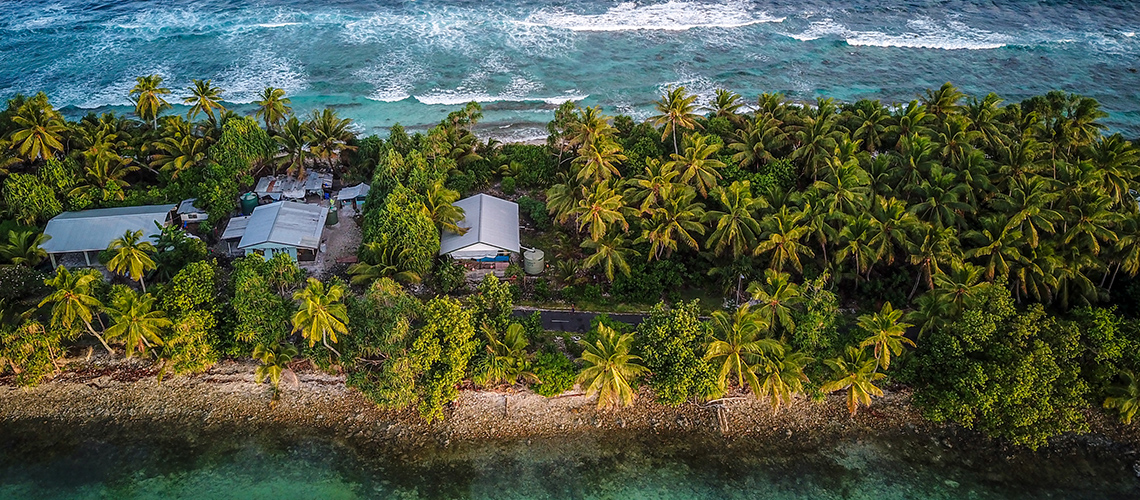
Addressing the Risks of Climate Induced Disasters in Bhutan through Enhanced National and Local Capacity for Effective Actions
The current NAPA II project, Addressing the Risk of Climate-Induced Disasters through Enhanced National and Local Capacity in Bhutan, will address urgent and immediate climate change adaptation needs and leverage co-financing resources from national government, bilateral and other multilateral sources, and the private sector. The project is working to “enhance national, local and community capacity to prepare for and respond to climate induced multi-hazards to reduce potential losses of human lives, national economic infrastructure, livelihood and livelihood assets.”
The USD 11.49 million project is funded by Global Environment Facility/Least Developed Countries Fund, and coordinated by the National Environment Commission Secretariat in partnership with UNDP, Bhutan. The project will safeguard essential economic and livelihood infrastructure in hazard-prone communities and key industrial areas from increasing climate hazards such as floods, landslides, windstorms and forest fire through reducing vulnerability at high-risk areas and increasing adaptive capacity of community-level disaster risk management institutions.
Source: UNDP Bhutan Project Identification Form (May 1, 2012), and the Bhutan NAPA II brochure, June 2015.
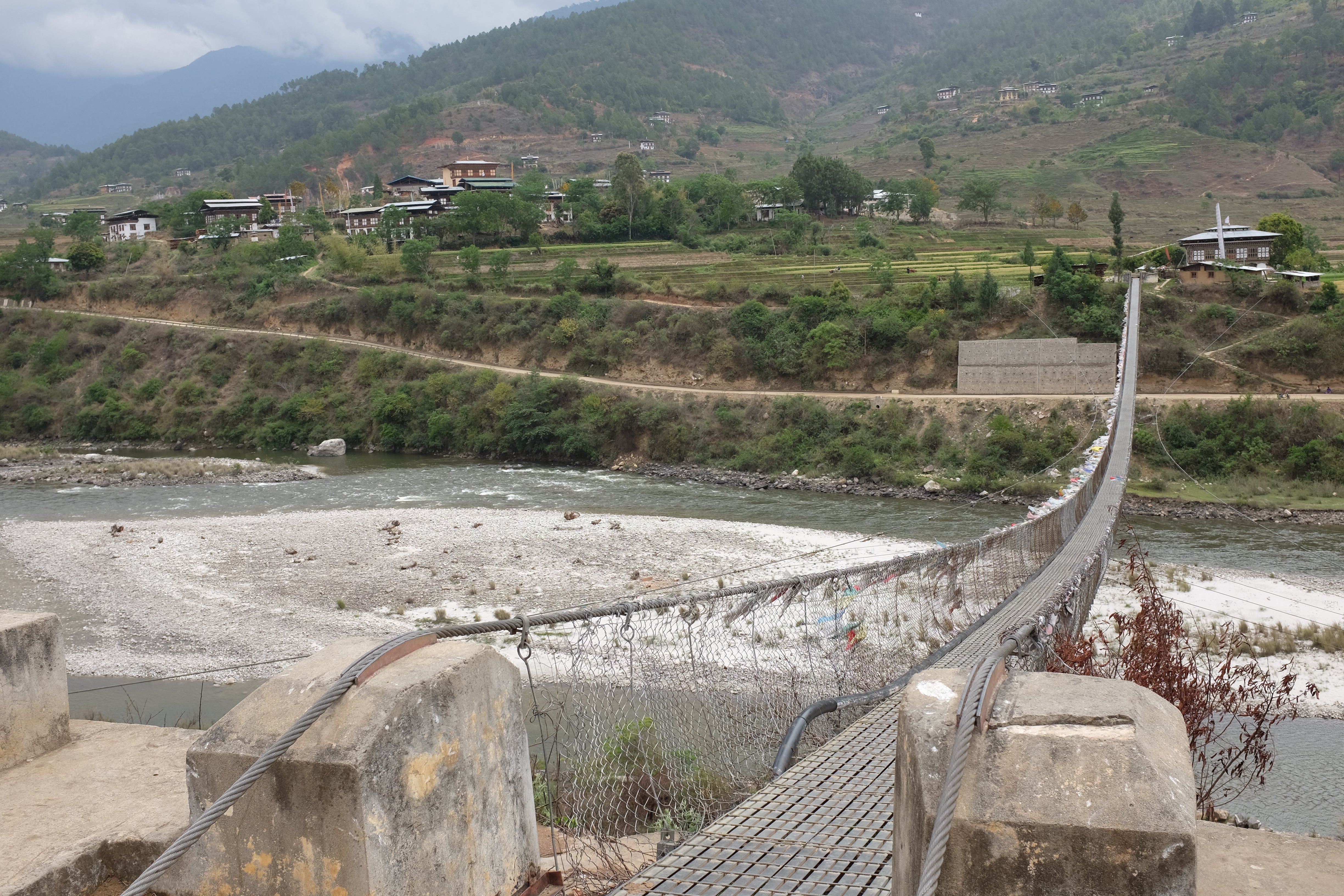
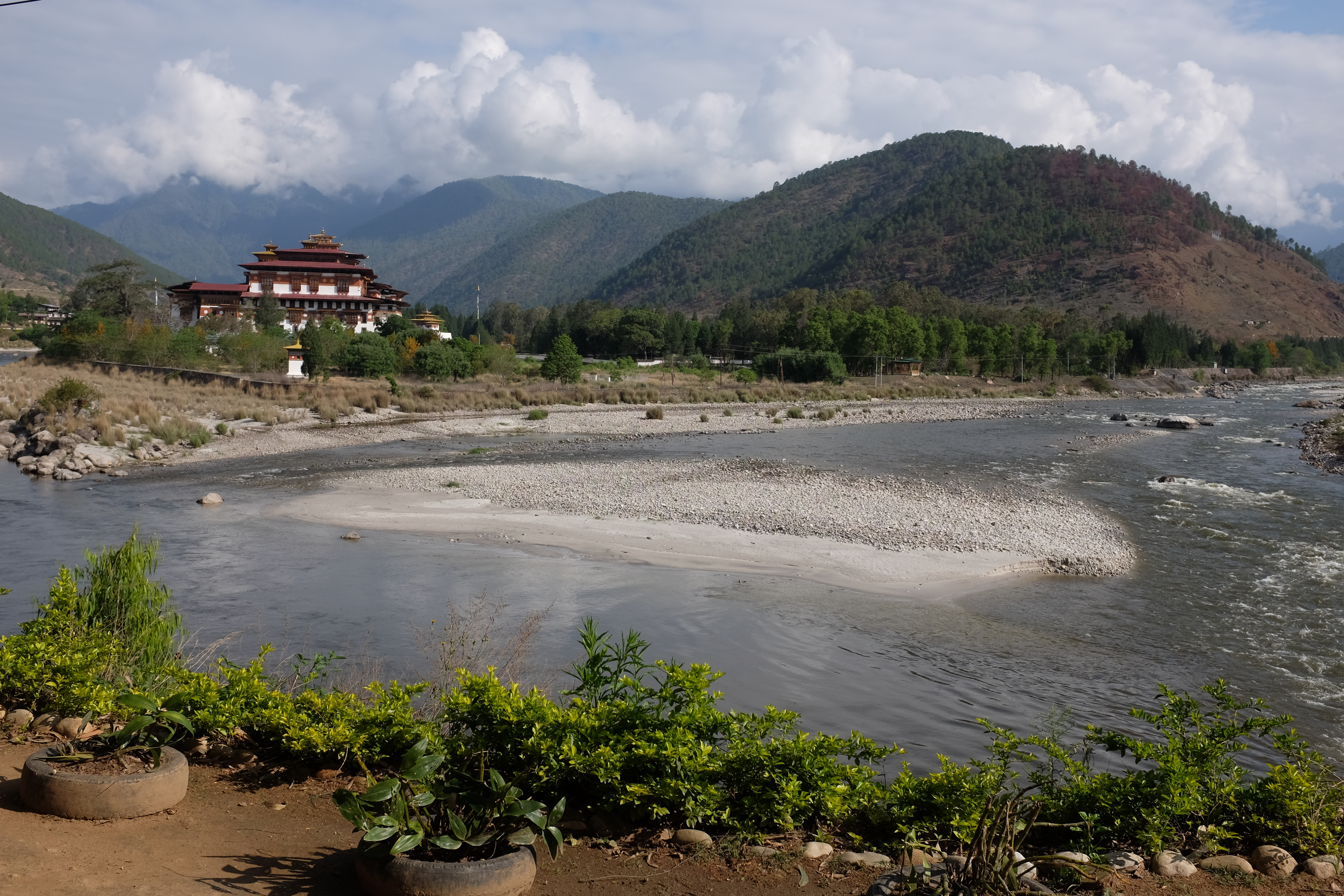
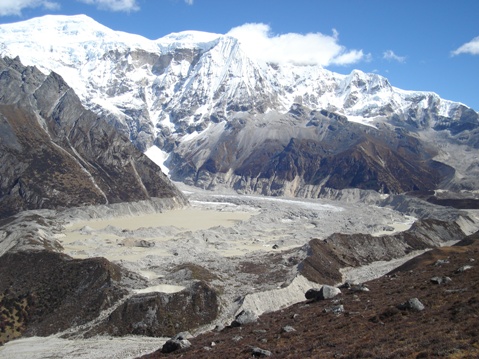
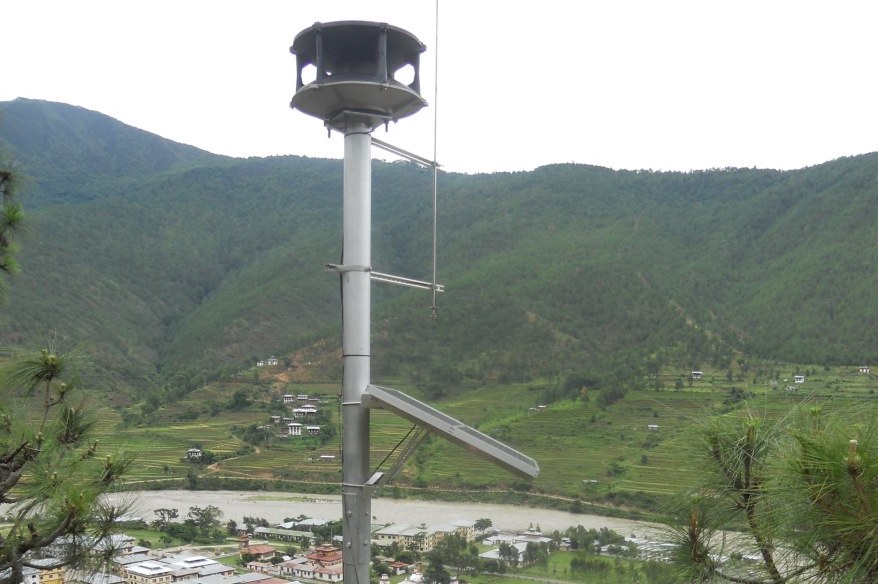
Brochures, Posters, Communications Products
Brochure - ADAPTING TO CLIMATE CHANGE: Implementing Bhutan’s National Adaptation Programme of Action (NAPA) II Project
Assessments and Background Documents
Plans and policies of relevance to NAPs for Least Developed Countries (LDCs)
Bhutan National Adaptation Programme of Action (NAPA) Official Document - May 2006
PIFs
The overarching objective of the project is to increase national, local and community capacity to prepare for and respond to climate-induced multi-hazards to reduce potential losses of human lives, national economic infrastructure, livelihoods and livelihood assets. This objective is fully aligned with the development priorities of the RGoB as set out in Bhutan’s tenth 5-year plan, which is in turn underpinned and guided by the long-term development vision of Gross National Happiness (GNH) and Bhutan 2020: A Vision for Peace, Prosperity and Happiness. Under the four pillars of GNH (i.e. sustainable and equitable socio-economic development; environmental conservation; preservation and promotion of culture; and good governance), the 5-year plan places a strong emphasis, among others, on balanced rural-urban development for poverty alleviation, expansion/maintenance of key economic infrastructure including road infrastructure that connects rural and urban centers, and strengthening of the agricultural sector which continues to employ the majority of Bhutanese and be the backbone of the rural economy.
This project will implement priority interventions addressed in Bhutan's National Adaptation Programme of Actions corresponding to the following objectives, in part or full, as outlined in NAPA profile:
- Disaster management strategy
- Weather forecasting system to serve farmers and agriculture
- Landslide management and flood prevention
- Flood protection of downstream industrial and agricultural area
- Rainwater harvesting
- Promote community-based forest fire management and prevention
Situated on the southern slope of the Eastern Himalayas, Bhutan’s landscape is mountainous and rugged with elevations ranging from 100m in the southern foothills to 7500m towards north. Due to its topography, habitable and arable areas are limited to approximately 8.3% and 2.9%, respectively, of the landmass. Agriculture, which employs 69% of the population and accounts for 78% of monetary income in rural households, and industrial activities are largely practiced in this highly confined space that its topography permits. While Bhutan is in general endowed with abundant water resources from the four major rivers and their tributaries, most of the large rivers are at the bottom of valleys and gorges rendering these rich water resources largely inaccessible for agriculture or domestic use. As a result, irrigation is limited to areas near small perennial streams that exist above main rivers and majority of farmers rely primarily on monsoonal rains, which account for 60-90% of annual precipitation.
Bhutan is one of the most disaster prone countries in the Asia-Pacific region, irrespective of the presence of climate change. The country is exposed to multiple hazards, most prominently flash floods, landslides, windstorms, earthquakes, forest fires, and glacial lake outburst floods (GLOFs). In terms of relative exposure to flood risks (as % of population), Bhutan ranks fourth highest in the region. Although the direct human risks of landslides, windstorms, and forest fires are not particularly higher compared to other countries, the socioeconomic repercussions from these events are thought to be high due to the baseline poverty prevalence.
Climate change is likely to magnify the intensity and frequency of these hazards. In fact, according to the International Disaster Database, among the top 10 natural disasters in Bhutan between 1900 to 2012, in terms of the number of casualties and number affected, all of them occurred in the last two decades (except epidemic outbreaks), which makes certain degree of attribution of climate change to the increasing magnitude of such hazards plausible. The most pronounced consequences of climate change in Bhutan are two folds: disruptions in the monsoonal system and increasing/intensifying trends of extreme hydro-meteorological hazards, both of which are obviously closely linked. These disturbances will amplify the socioeconomic challenges for the Bhutanese society, especially in rural areas where the majority of the population is engaged in rain-fed agriculture and rampant poverty makes them least equipped to adapt to creeping changes in climate.
Monsoon rains generally arrive during the summer months (from late June to late September). Downscaled simulations undertaken in Bhutan’s SNC indicate that the mean annual rainfall will increase by 26-30% by 2069 compared to the baseline year of 1980. This increase occurs primarily during the summer monsoon season while the dry winter season rainfall is projected to decline slightly. In addition, accelerated melting of glaciers, which act as a gigantic natural water retention and dispensing mechanism to communities downstream, is disrupting the hydrological regime of the perennial river systems in the region. All in all, climate change will increase the uncertainty of water availability throughout the year, and rural farmers are likely to have to better manage high fluctuation of rainfalls – increasing volume of monsoonal rain so that they can sustain longer dry periods. This poses significant risks to development when built rural infrastructure to alleviate water shortages, such as communal rainwater harvesting, is minimally available.
Source: UNDP Bhutan Project Identification Form (May 1, 2012)
- Outcome 1: Risks from climate-induced floods and landslides reduced in the economic and industrial hub of Bhutan
- Output 1.1: Protection of Pasakha Industrial area from flooding events through riverbank protection, river training and development of flood buffer zones
- Output 1.2: Slope stabilization to reduce climate-induced landslides in the Phuntsholing Township
- Output 1.3: Integrated risk hazard assessment and mapping completed in 4 critical landslide and flashflood prone areas with data collection standards compatible with the national database
- Outcome 2: Community resilience to climate-induced risks (drought, flood, landslides, windstorms, forest fires) strengthened in at least four Dzongkhags
- Output 2.1: Climate-resilient water harvesting, storage and distribution systems designed, built and rehabilitated in at least four Dzongkhags, based on observed and projected changes in rainfall patterns and intensity
- Output 2.2: Community-level water resource inventory completed and maintained by Dzongkhag administration to increase the adaptive capacity of communities in the face of increasing water scarcity
- Output 2.3: Disaster Management Institutions at various levels established and trained in four Dzongkhags to prepare for, and respond to, more frequent and intense floods, storms and wildfire events
- Outcome 3: Relevant information about climate-related risks and threats shared across community-based organizations and planners in climate-sensitive policy sectors on a timely and reliable basis
- Output 3.1: Enhanced quality, availability and transfer of real-time climate data in all Dzongkhags which experience increasing frequency of extreme hydo-meterological events
- Output 3.2: Increased effectiveness of National Weather and Flood Forecasting and Warning Center through improved capacity to analyze, manage and disseminate climate information in a timely manner
Source: UNDP Bhutan Project Identification Form (May 1, 2012)
Project Start:
- Project Inception Workshop: will be held within the first 2 months of project start with those with assigned roles in the project organization structure, UNDP country office and where appropriate/feasible regional technical policy and programme advisors as well as other stakeholders. The Inception Workshop is crucial to building ownership for the project results and to plan the first year annual work plan.
Daily:
- Day to day monitoring of implementation progress: will be the responsibility of the Project Manager, based on the project's Annual Work Plan and its indicators, with overall guidance from the Project Director. The Project Team will inform the UNDP-CO of any delays or difficulties faced during implementation so that the appropriate support or corrective measures can be adopted in a timely and remedial fashion.
Quarterly:
- Project Progress Reports (PPR): quarterly reports will be assembled based on the information recorded and monitored in the UNDP Enhanced Results Based Management Platform. Risk analysis will be logged and regularly updated in ATLAS.
Annually:
- Annual Project Review/Project Implementation Reports (APR/PIR): This key report is prepared to monitor progress made since project start and in particular for the previous reporting period (30 June to 1 July). The APR/PIR combines both UNDP and GEF reporting requirements.
Periodic Monitoring through Site Visits:
- UNDP CO and the UNDP RCU will conduct visits to project sites based on the agreed schedule in the project's Inception Report/Annual Work Plan to assess first hand project progress. Other members of the Project Board may also join these visits. A Field Visit Report/BTOR will be prepared by the CO and UNDP RCU and will be circulated no less than one month after the visit to the project team and Project Board members.
Mid-Term of Project Cycle:
- Mid-Term Evaluation: will determine progress being made toward the achievement of outcomes and will identify course correction if needed. It will focus on the effectiveness, efficiency and timeliness of project implementation; will highlight issues requiring decisions and actions; and will present initial lessons learned about project design, implementation and management. Findings of this review will be incorporated as recommendations for enhanced implementation during the final half of the project’s term.
End of Project:
- Final Evaluation: will take place three months prior to the final Project Board meeting and will be undertaken in accordance with UNDP and GEF guidance. The final evaluation will focus on the delivery of the project’s results as initially planned (and as corrected after the mid-term evaluation, if any such correction took place). The final evaluation will look at impact and sustainability of results, including the contribution to capacity development and the achievement of global environmental benefits/goals. The Terminal Evaluation should also provide recommendations for follow-up activities.
- Project Terminal Report: This comprehensive report will summarize the results achieved (objectives, outcomes, outputs), lessons learned, problems met and areas where results may not have been achieved. It will also lie out recommendations for any further steps that may need to be taken to ensure sustainability and replicability of the project’s results.
Learning and Knowledge Sharing:
- Results from the project will be disseminated within and beyond the project intervention zone through existing information sharing networks and forums.
- The project will identify and participate, as relevant and appropriate, in scientific, policy-based and/or any other networks, which may be of benefit to project implementation though lessons learned. The project will identify, analyze, and share lessons learned that might be beneficial in the design and implementation of similar future projects.
- Finally, there will be a two-way flow of information between this project and other projects of a similar focus.
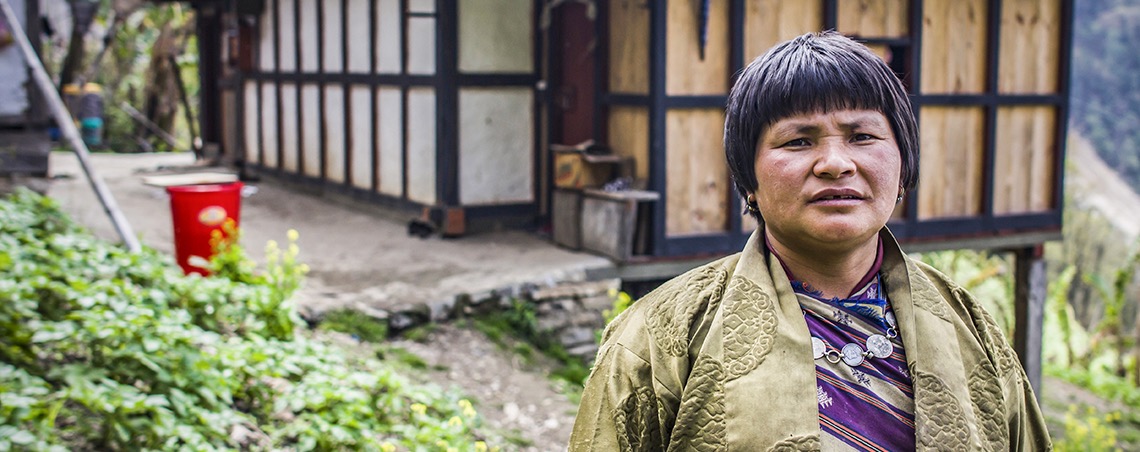
Mountain Ecosystem-based Adaptation in Nepal
The Harpan Watershed, Panchase in Nepal lies in the mid-hills of Nepal and consists of valleys, hills and the high mountains of the Himalayas. The economy of the Panchase is largely subsistence, based on crop production and livestock. There is high climatic variation due to changes in altitude and an average rainfall of 3, 355mm. The selected project site, the Harpan watershed, is about 15 km² with sub-tropical to temperate climate. There are about 900 households with a population of 4,598.
Through the global Ecosystems-based Adaptation (EbA) in Mountains Programme, UNDP, UNEP and IUCN, with funding from the German Government (BMUB), used sustainable management, conservation and restoration of ecosystems, as part of an overall EbA adaptation strategy, to reduce the vulnerability and enhance the resilience of select fragile mountain ecosystems and their local communities to climate change impacts.
For more information visit the Global Ecosystems Based Adaptation in Mountains Programme profile, or the EbA Flagship.

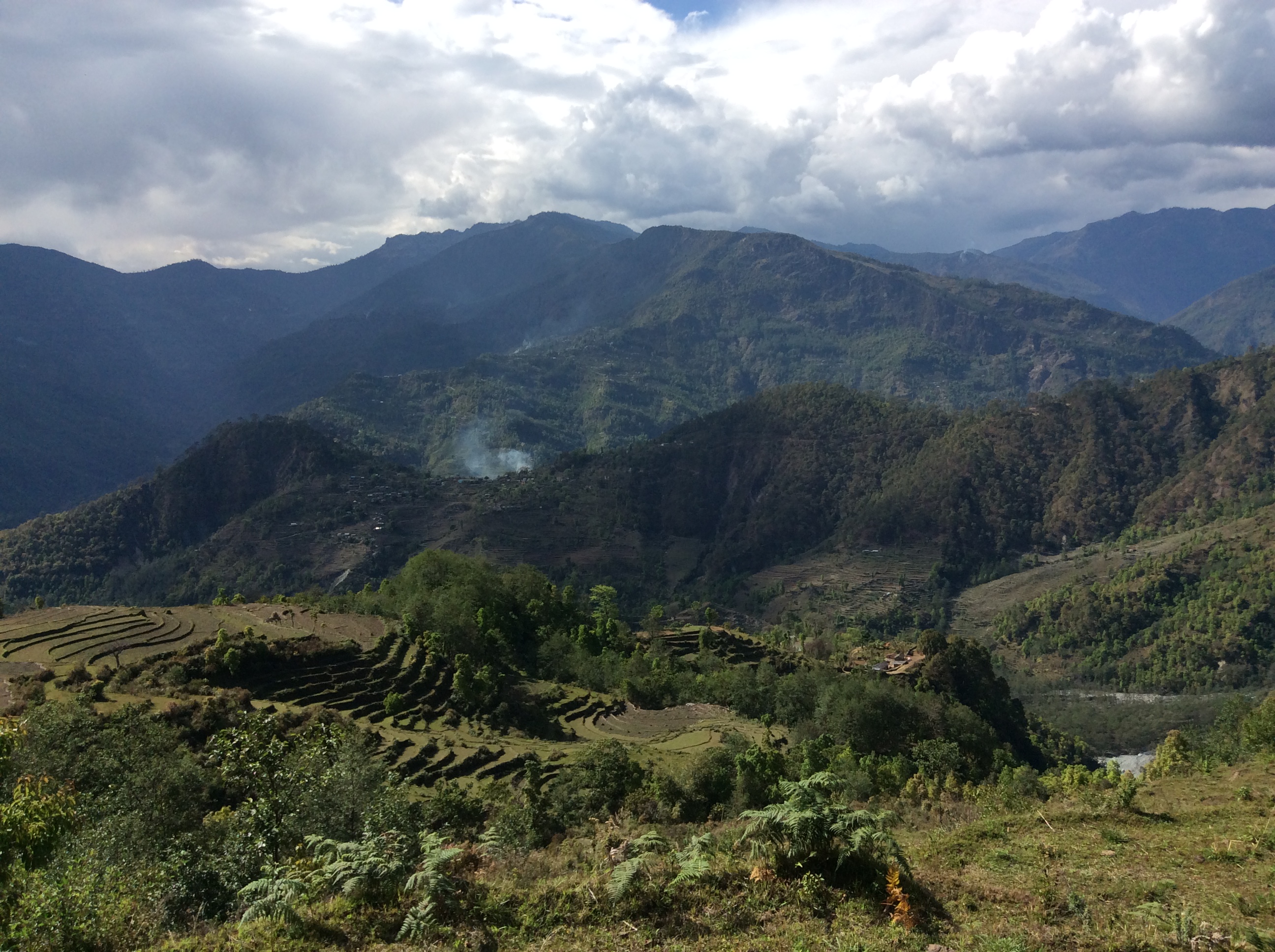
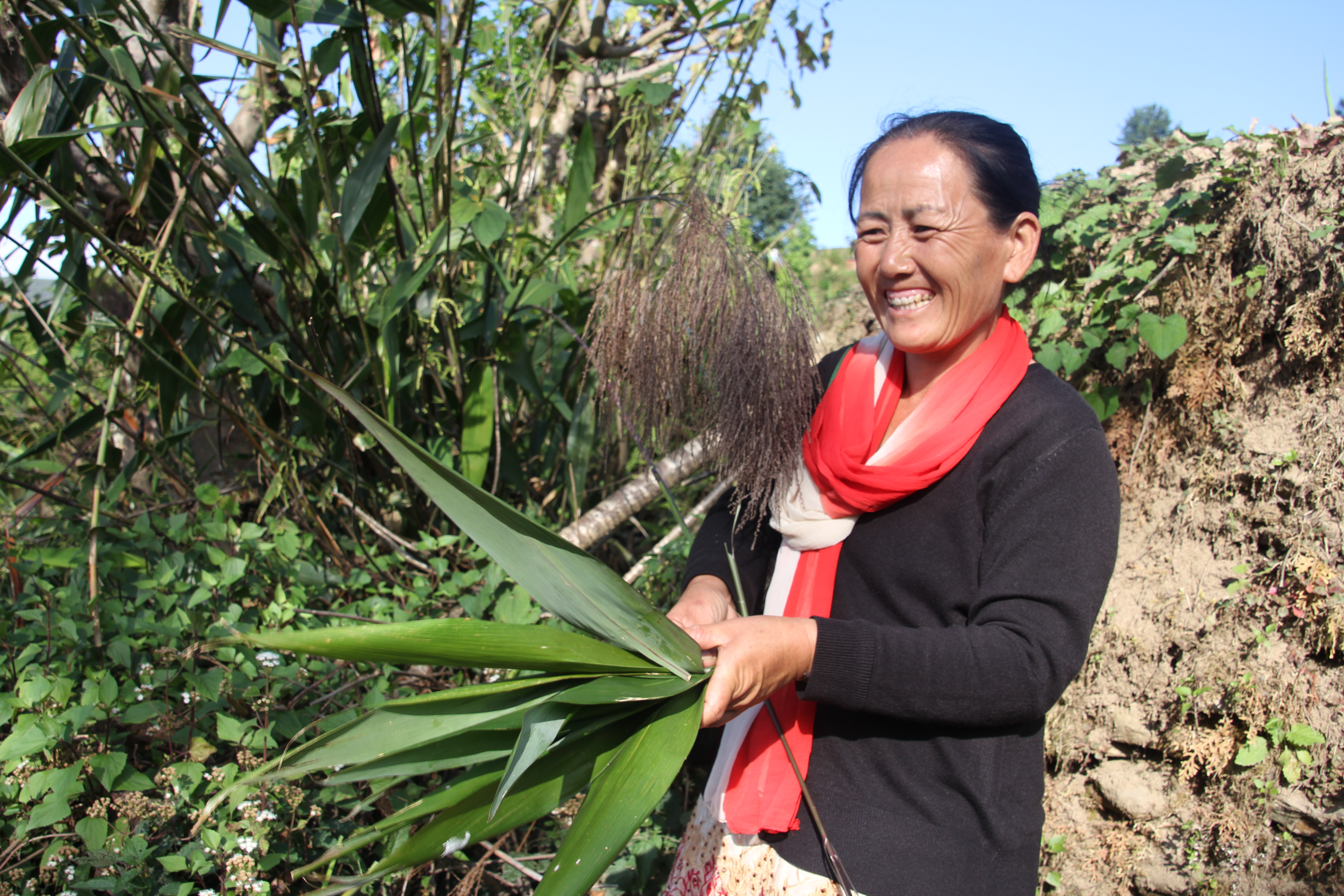
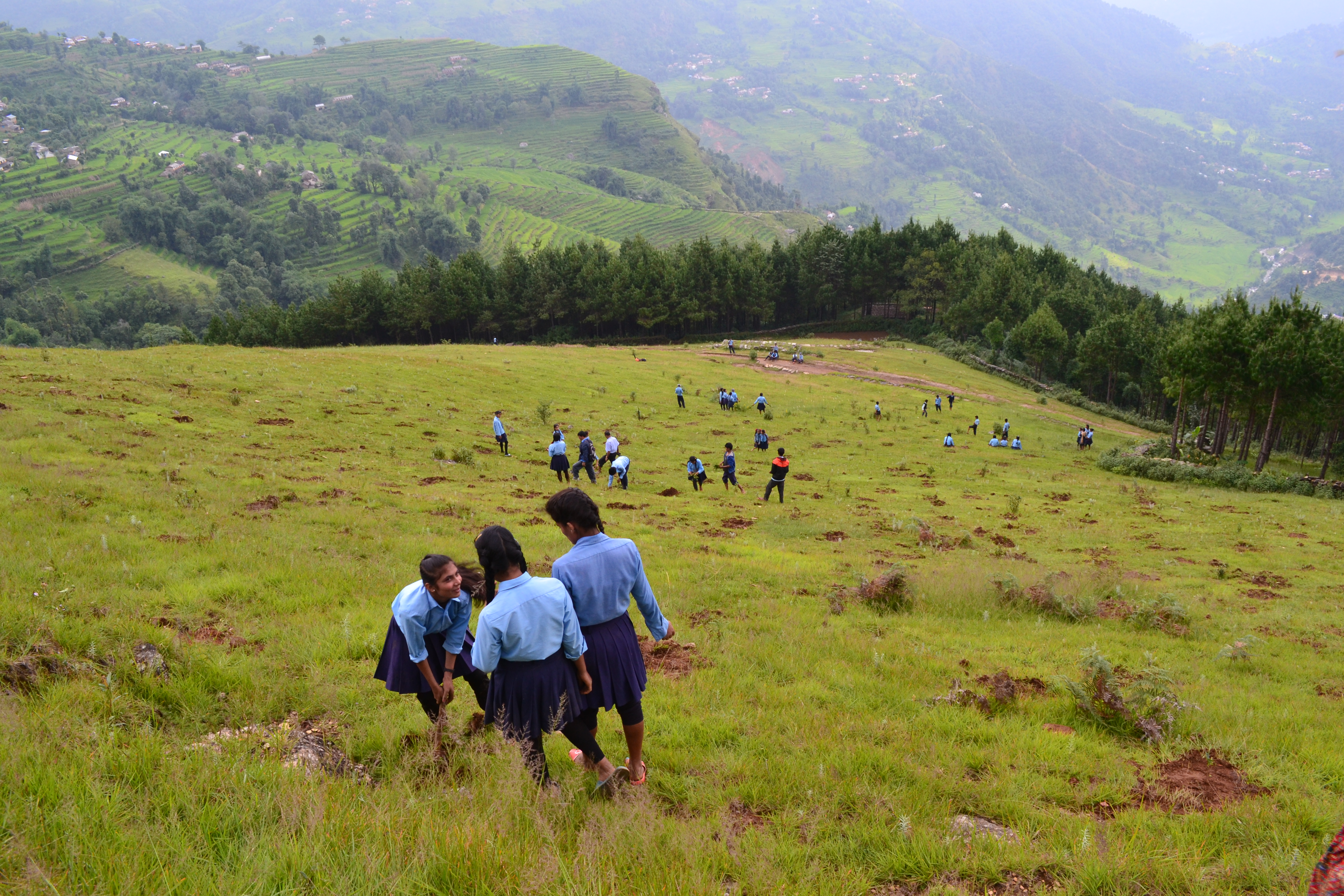
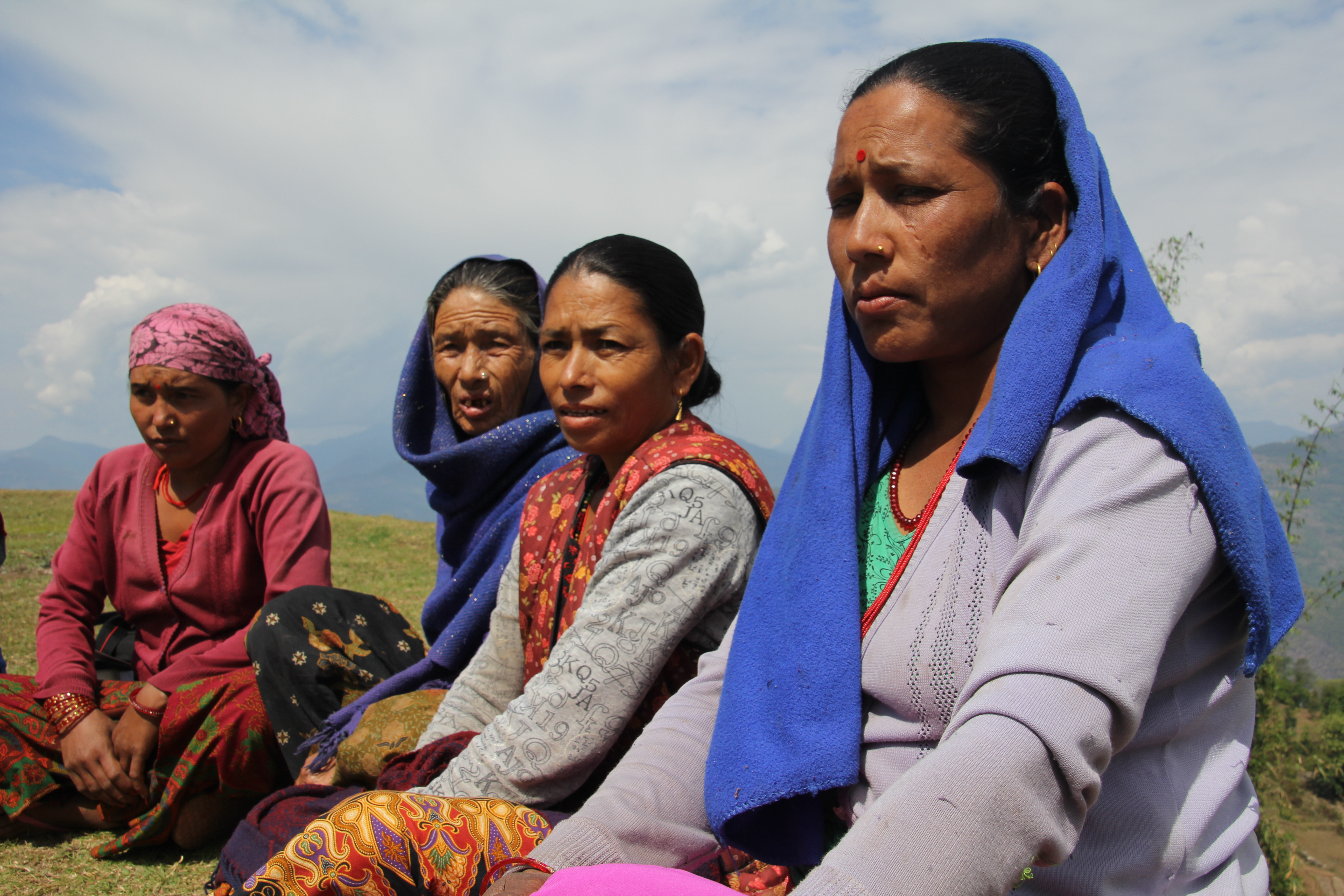
Assessments and Background Documents
Mt EbA Nepal Vulnerability & Impact Assessment of Panchase Region (2015)
Min of Forests and Soil Cons & UNDP Nepal (2014) Mt EbA Baseline & Socio-Econ Survey
Relevant Peer-Reviewed Articles
EbA planning in the Panchase Mountain Ecological Region (2015)
Brochures, Posters, Communications Products
BROCHURE NEPAL Mt EbA Programme 2 (Min of Forests and Soil Cons & UNDP Nepal)
BROCHURE Ecosystem Services (Min of Forests and Soil Cons & UNDP Nepal Mt EbA)
BROCHURE NEPAL Mt EbA Programme (Min of Forests and Soil Cons & UNDP Nepal)
BROCHURE EbA Concept (Min of Forests and Soil Cons & UNDP Nepal Mt EbA)
Project Brief / Fact Sheet
FACT SHEET - Nepal Mt EbA Programme (Min of Forests and Soil Cons & UNDP Nepal)
Case Study
Min of Forests and Soil Cons & UNDP Nepal (2013) - Timur Value Chain Study
Min of Forests and Soil Cons & UNDP Nepal (2013) - Orchid Value Chain Study
Min of Forests and Soil Cons & UNDP Nepal (2013) - Kurilo Value Chain Study
Min of Forests and Soil Cons & UNDP Nepal (2013) - Chiraito Value Chain Study
Min of Forests and Soil Cons & UNDP Nepal (2013) - Allo Value Chain Study
ProDocs
The Nepal Pilot Project of the global Ecosystem-based Adaptation in Mountains Programme aims to enhance capacity of local communities, demonstrate EbA measures for continued provision of ecosystem services, and support in strengthening the institutional capacity of key national Nepalese actors to build and better integrate ecosystem resilience options in national, sub-national and local level plans.
It is working to specifically support 4 outcomes:
- Development of methodologies and tools for EbA decision-making in mountain ecosystems;
- Application of EbA tools and methodologies at the ecosystem level;
- Implementation of EbA pilot initiatives at the ecosystem level; and
- Development of a business case for EbA at the national level.
In Nepal, the Project is implemented by the Department of Forests (DoF) under the Ministry of Forests and Soil Conservation (MoFSC) and is coordinated by the Ministry of Science, Technology and Environment (MoSTE). Similarly, there are three implementing agencies: UNEP, UNDP and IUCN. EbA initiatives are concentrated in 17 VDCs (Village Development Committees) of the ‘Panchase’ region and covers three districts – Kaski, Syangja and Parbat.
Some key accomplishments for the project include:
- The project has prioritized 3 important sub-watersheds – Rati, Saradi and Harpan - and focused on different interventions such as ecosystem restoration, water conservation, land rehabilitation, livelihood diversification and capacity enhancement of government agencies and local communities.
- Practices, like water source conservation and construction of conservation ponds, have been initiated in the pilot sites to address water scarcity issues, since the water sector is significantly affected by climate change in Nepal. These initiatives have helped reduce drudgery in fetching water required for dominant rural livelihood practices, i.e. subsistence agriculture and livestock rearing.
- Out-migration in Panchase has resulted in an increasing amount of abandoned and barren land. The Project has hence carried out plantation initiatives of endemic multi–use species to protect these lands from further degradation and also complement the needs of rural people for fuel wood and fodder. Additionally, the Project has supported nursery establishment in the region to provide easy access to seedlings species for plantations by the locals. Likewise, land degradation resulting from unplanned rural road construction has been addressed by roadside greenery promotion and roadside rehabilitation, using engineered structures such as ‘gabion cages’ that are supplemented by plantations. Similarly, several landslide and gully control initiatives have also been carried out in the project pilot sites.
- Rangeland management has been done by building compound walls to halt over-grazing activities of the livestock and protect the grassland ecosystem from further degradation. The Project has also distributed fodder species to reduce the pressure on the open degraded land.
- Several river bank conservation initiatives with application of grey-green measures, i.e. engineered structures coupled with bamboo plantation, have been carried out to protect agricultural lands in the river banks to reduce deposition of sediment downstream.
- The Harpan Sub-watershed is an important feeder to the nationally important Phewa Lake, which today suffers from massive deposition of silt. The Project has, therefore, carried out a comprehensive study on the siltation process of Harpan Khola and subsequently proposed construction of ecosystem-based siltation control techniques and a siltation dam in the Harpan River.
- The EbA concept has now been mainstreamed in Bachelors of Science (BSc) degree syllabus of the Tribhuvan University, Central Department of Environmental Science (CDES). Similarly, to reduce the research gap, EbA has provided research grants to the students of Tribhuvan University to undertake research work in the EbA site to investigate the effectiveness of EbA options.
- The Project broadcasted radio programs named ‘Panchase ko Serofero’ through Radio barahi-99.2, Radio saligram-100.6 and Syangja FM-89.6, respectively, from Kaski, Parbat and Syangja to increase local level awareness on ecosystems and EbA.
Some policy-related accomplishments include:
- Led by UNDP, the Nepal project has been engaged in the process of establishing the newly formed High-Level Technical Committee on EbA to be led by the Ministry of Forests and Soil Conservation. The main role of the Committee is to coordinate and mainstream ecosystem-based approaches to climate change adaptation into different sectoral plans and programmes. The Committee includes representatives from various Ministries, such as National Planning Commission, Ministry of Forests and Soil Conservation, Ministry of Science, Technology and the Environment, Ministry of Agriculture and Ministry of Federal Affairs and Local Development. The first meeting of the Committee was scheduled for last week of September.
- The results of the Cost-benefit analysis carried out by the Nepal project, led by UNDP, will be presented in a high-level event, organized jointly with the High-level Technical Committee, in October.
- The new Forest Policy (2015) has climate change as one of seven thematic areas and includes EbA as one of the approaches put forward for adaptation. The project, led by UNDP, is involved in a working group developing a 5-yr action plan for the delivery of the climate change area of this Policy in all 75 Districts of Nepal. The project is providing direct technical input into how this key national policy will be implemented in practice with regards to climate change and making the case for integrating EbA measures into its delivery.
- The Nepal project, led by UNDP, has provided technical and financial support to produce draft Guidelines on Protected Forests, which provide regulations and directives on managing Protected Forests and are in the process of being endorsed by Government. The proposed Guidelines incorporate EbA and provide the opportunity for integrating EbA into the national Protection Forest management plans and programmes.
Mountain Ecosystem-based Adaptation in Uganda
Mount Elgon landscape in Uganda is the seventh highest mountain in Africa, a major catchment area and straddles the border between Kenya and Uganda. The climate is cool with a mean annual rainfall of 1,270 mm. The population of Mount Elgon is almost entirely rural and dependent on subsistence agriculture, with approximately 564,000 people living in the 4 districts which make up the project site. The region is home to Mt Elgon National Park and is of great conservation value, but high population density means that agriculture is spreading rapidly.
Through the global Ecosystems-based Adaptation (EbA) in Mountains Programme, UNDP, UNEP and IUCN, with funding from the German Government (BMUB), are using sustainable management, conservation and restoration of ecosystems, as part of an overall EbA adaptation strategy, to reduce the vulnerability and enhance the resilience of select fragile mountain ecosystems and their local communities to climate change impacts. The promoted EbA measures carefully take into account anticipated climate change impacts trends to ensure a forward-looking process.
For more information visit the Global Ecosystems Based Adaptation in Mountains Programme profile, or the EbA Flagship website.
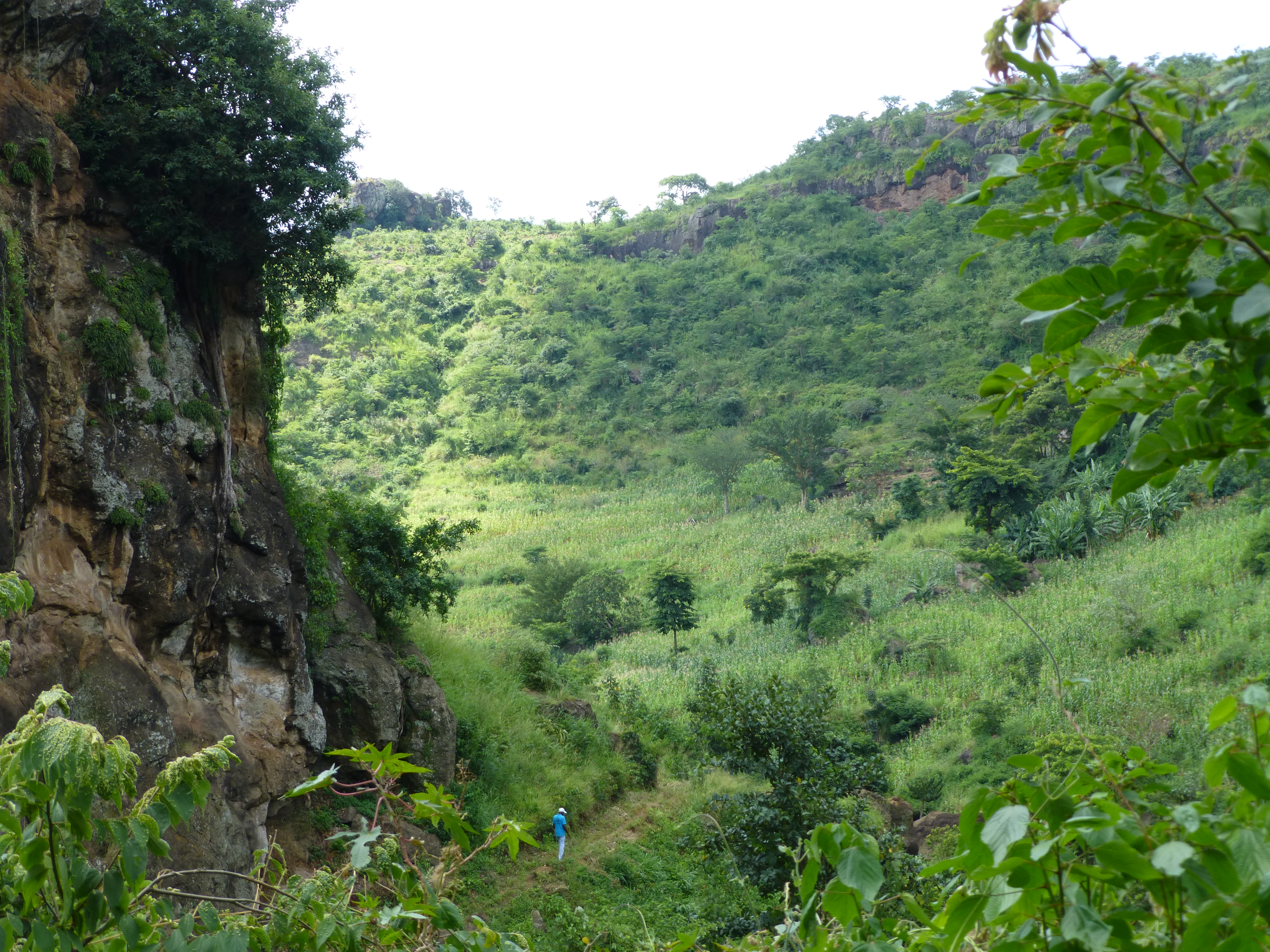
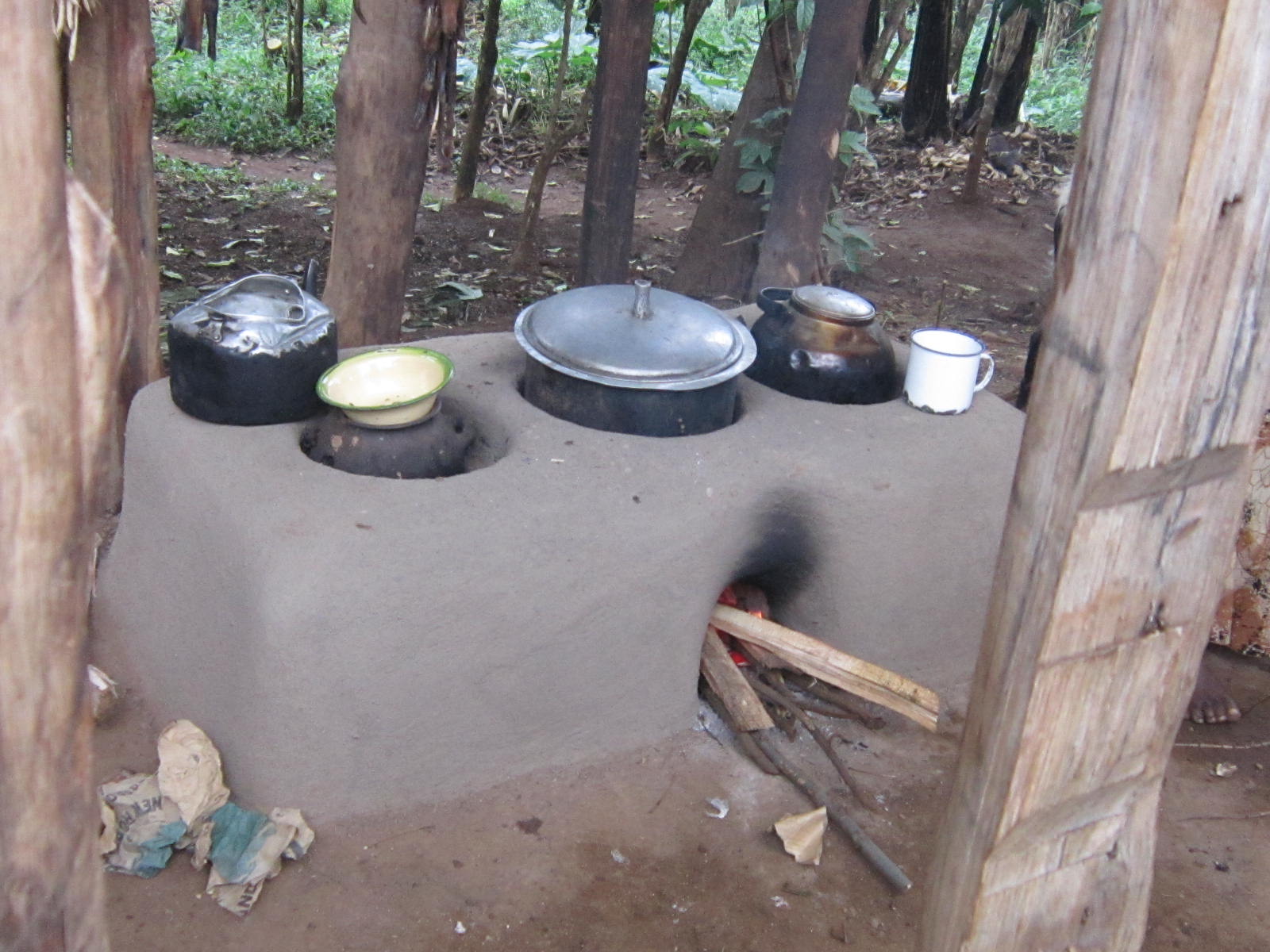
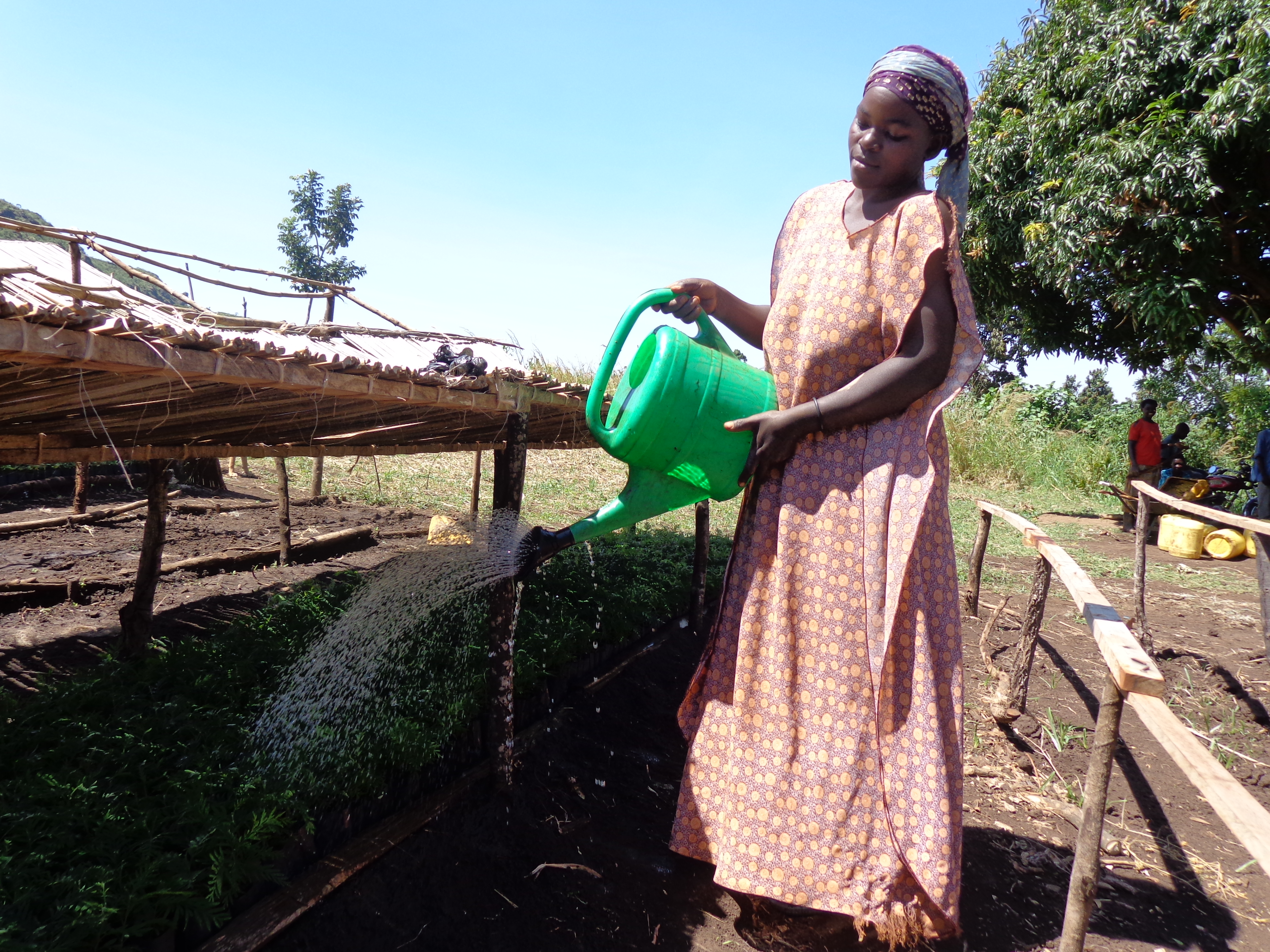
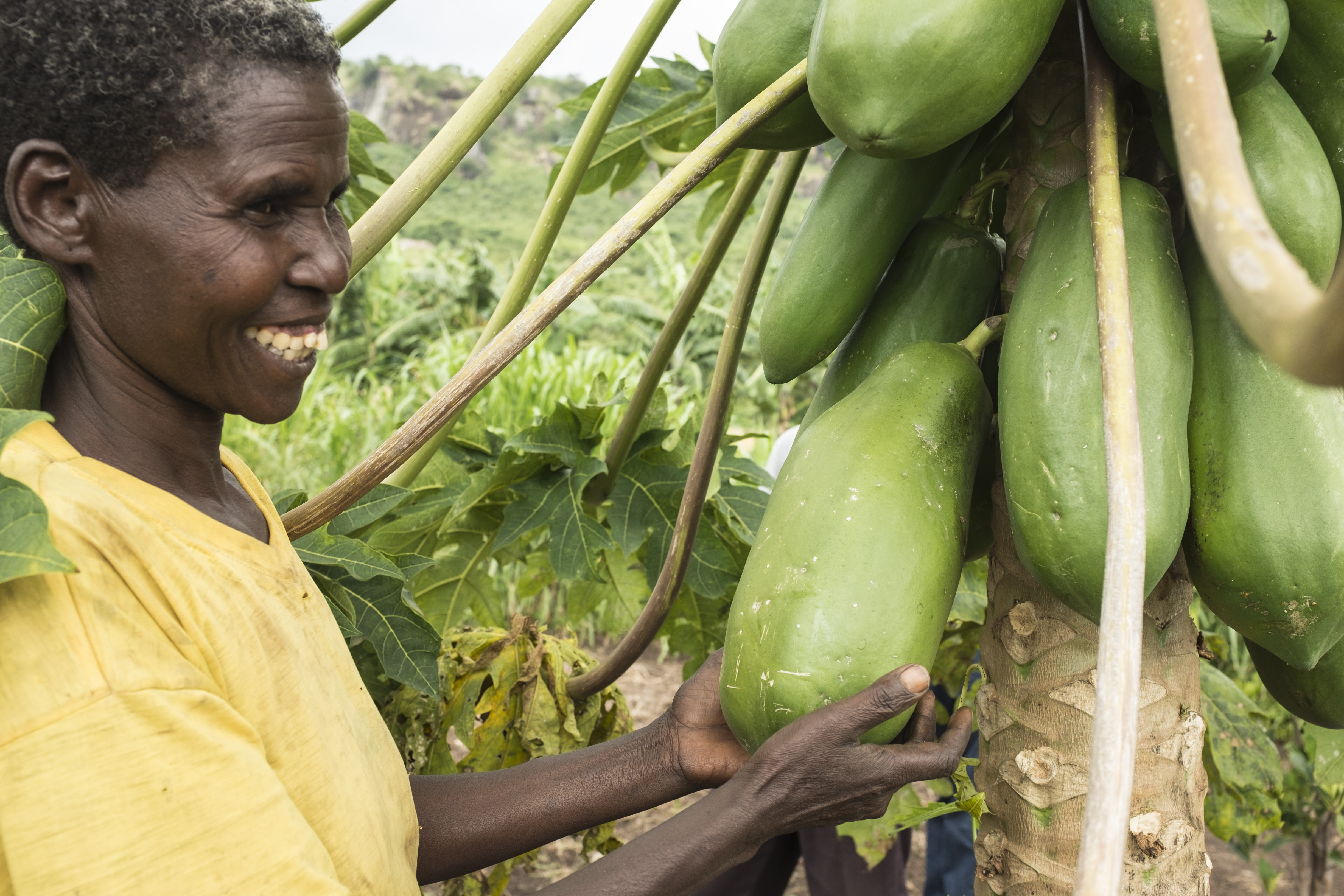
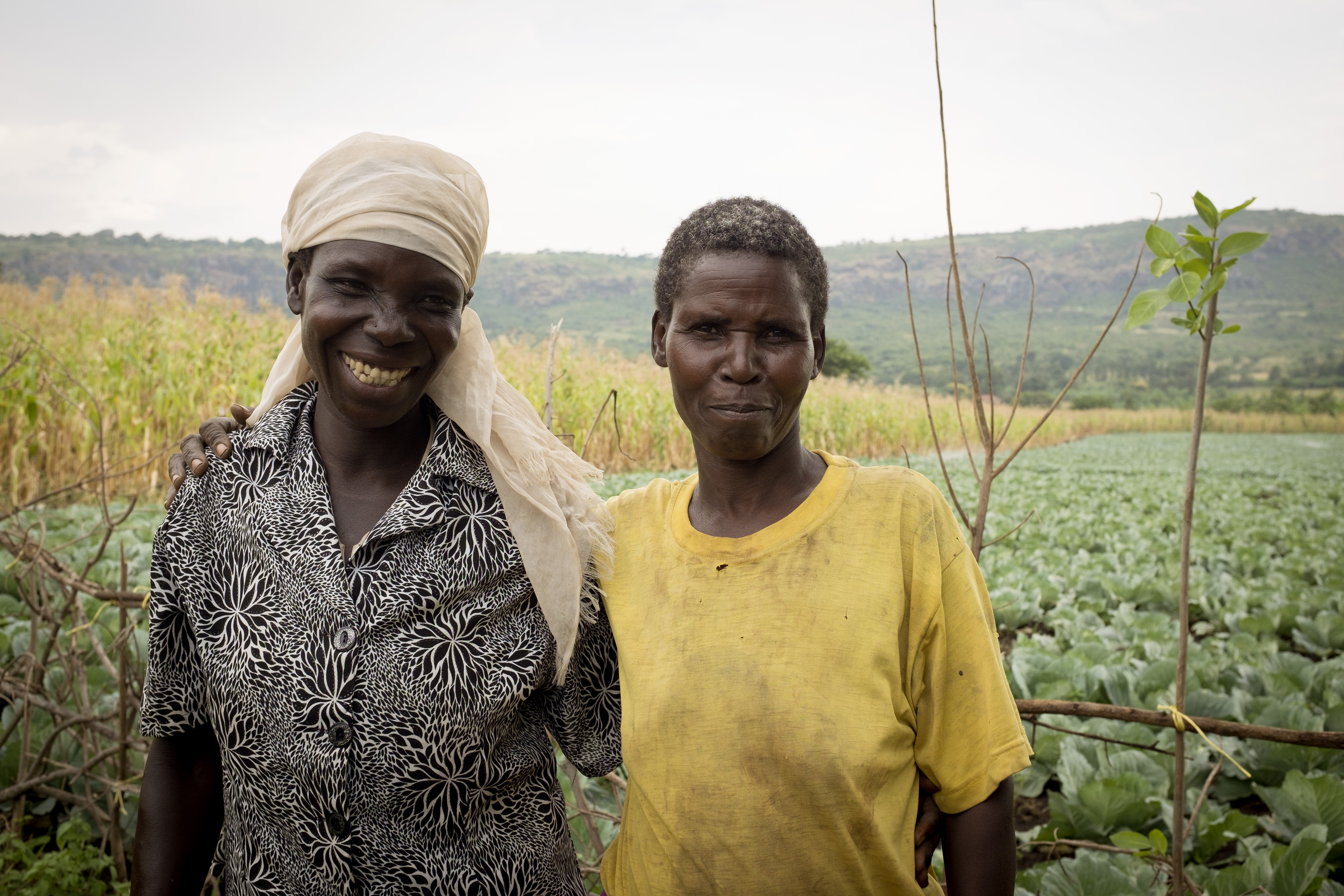
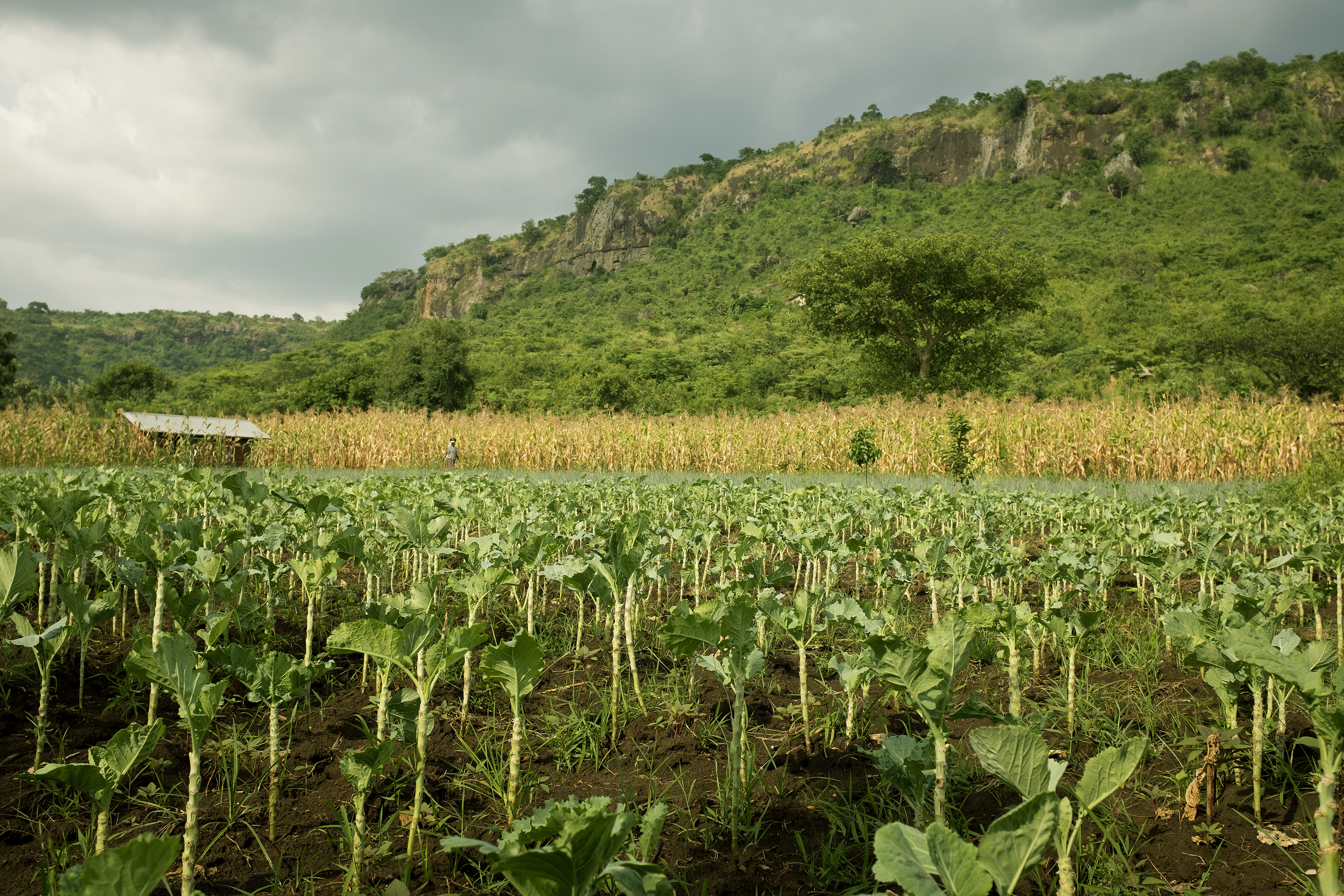
Assessments and Background Documents
UNDP Uganda+UNEP+UNEP-WCMC (2013) Uganda VIA Report POPULAR VS
Min of Water and Envir & UNDP (2012) VIA Capacity Assessment for EbA in Mt Elgon
Min of Water and Envir & UNDP (2012) Baseline info for EbA in Mt Elgon Ecosystem Project Strategy
Brochures, Posters, Communications Products
Min of Water and Envir & UNDP (2014) BROCHURE Uganda Mt EbA pilot project
Communications Products
Min of Water and Envir & UNDP (2014) Uganda Mt EbA Communications Strategy
Training & Tools
Min of Water and Envir & UNDP (2015) Training Manual - Mainstreaming EbA into policy & financing frameworks
Min of Water and Envir & UNDP (2015) Manual for implementing EbA in Mt Elgon Ecosystem of Uganda
Reports and Publications by country teams
Min of Water and Envir & UNDP (2015) Public Policy & Financing Framework for EbA in Mt Elgon POPULAR VS
Min of Water and Envir & UNDP (2015) Public Policy & Financing Framework for EbA in Mt Elgon
UNDP Uganda: Ecosystem Based Adaptation in Uganda
This documentary highlights the need for mainstreaming ecosystem-based adaptation strategies into national policies to ensure that actions against climate change is planned for. It puts a strong emphasis on the importance of Government funding such measures into the future through core budgets.
The objective of this Uganda pilot project under the global Mountain EbA Programme is to reduce the vulnerability of Uganda to climate change impacts through piloting Ecosystem-based Adaptation options with particular emphasis on mountain ecosystems in the Mt Elgon region.
It is working to specifically support 4 outputs:
- The development of decision-making tools for ecosystem-based adaptation for assessing ecosystem resilience,
- Field testing the tools in the pilot countries,
- Making investments in and building capacity for EbA at select demonstration sites, and
- Establishing the economic benefits and financial costs of EbA, to guide national policies.
The project is implemented by the Ministry of Water and Environment (MWE) focusing on the Districts of Sironko and Bulambuli (implementation supported by UNDP) and Kapchorwa and Kween (Implementation supported by IUCN).
Some key accomplishments for the project include:
- A Vulnerability Impact Assessment (VIA) has been carried out to determine which EbA interventions can be used to support the communities in the selected project area.
- About 600 households within the 4 districts (Kween, Kapchorwa, Sironko & Bulambuli) have received training in climate-smart interventions and are implementing them on their land. Local platforms including local radios are being used for knowledge sharing.
- Different techniques in support of climate-resilient agriculture have been encouraged, including mulching, use of organic fertilizer, improved water retention through roadside drainage bunds, run off retention drains, diversion bands in crop gardens; and gravity flow irrigation (benefitting over 1,000 formerly water-stressed community members in 3 villages in Sanzara Parish).
- Practices like soil and water conservation structures, have also been promoted, including contour trenches, contour ridges, retention or check dams, infiltration ditches and contour bands; tree planting for stabilization of soil and water conservation, with appropriate species together with contour grass strips; and the management and protection of existing forests and trees on the farm.
- At the local governance level, structures for natural resource governance have been strengthened, including a schematic framework for managing a new adaptation fund in all the three catchments, including the communities and district technical staff.
- The ECOTRUST PES facility being piloted by the project was officially launched in March 2015 by the Minister of Water and Environment, Hon. Ephraim Kamuntu. The Minister emphasized the contribution of the fund to many of the investment priorities identified in the National Development Plan of Uganda such as skills development, water and sanitation; and facilitating availability and access to critical production inputs especially in agriculture.
- With support from the project, the Ministry of Water and Environment is developing guidelines on how to integrate EbA into national and district level planning and policies. This is a participatory process that has been done through training workshops and provision of tools. A specific training package on implementing EbA in Mt Elgon has also been developed, which provides step to step guidance on planning and implementing EbA aimed as a tool at supporting extension services
- The cost-benefit analysis results and data generated will be used to advocate the case for EbA to government during a meeting of the Top Policy Committee of the Ministry of Water & Environment. This will then be followed up at during the Joint Sector Water & Environment Review (week of 5th Oct) being held by the National Climate Change Policy Committee and the National Environment & Natural Resources Sector Working Group.
 Community Revolving Fund promotes rural enterprise development and environmental protection
Community Revolving Fund promotes rural enterprise development and environmental protection
 Beekeeping saving the environment in Sironko
Beekeeping saving the environment in Sironko
 Global Ideas: Uganda – Protecting an Ecosystem
Global Ideas: Uganda – Protecting an Ecosystem
 Our Stories - An environmentally friendly building technology saving trees in Sironko district
Our Stories - An environmentally friendly building technology saving trees in Sironko district
 Articles - Uganda’s first Payment for Environmental Services Fund launched, 27 Mar 2015
Articles - Uganda’s first Payment for Environmental Services Fund launched, 27 Mar 2015
.jpg/_jcr_content/renditions/cq5dam.web.540.390.jpeg) Governance Body for the Mountain EbA Project in Uganda holds its second meeting, 4 Jul 2014
Governance Body for the Mountain EbA Project in Uganda holds its second meeting, 4 Jul 2014
Mountain Ecosystem-based Adaptation in Peru
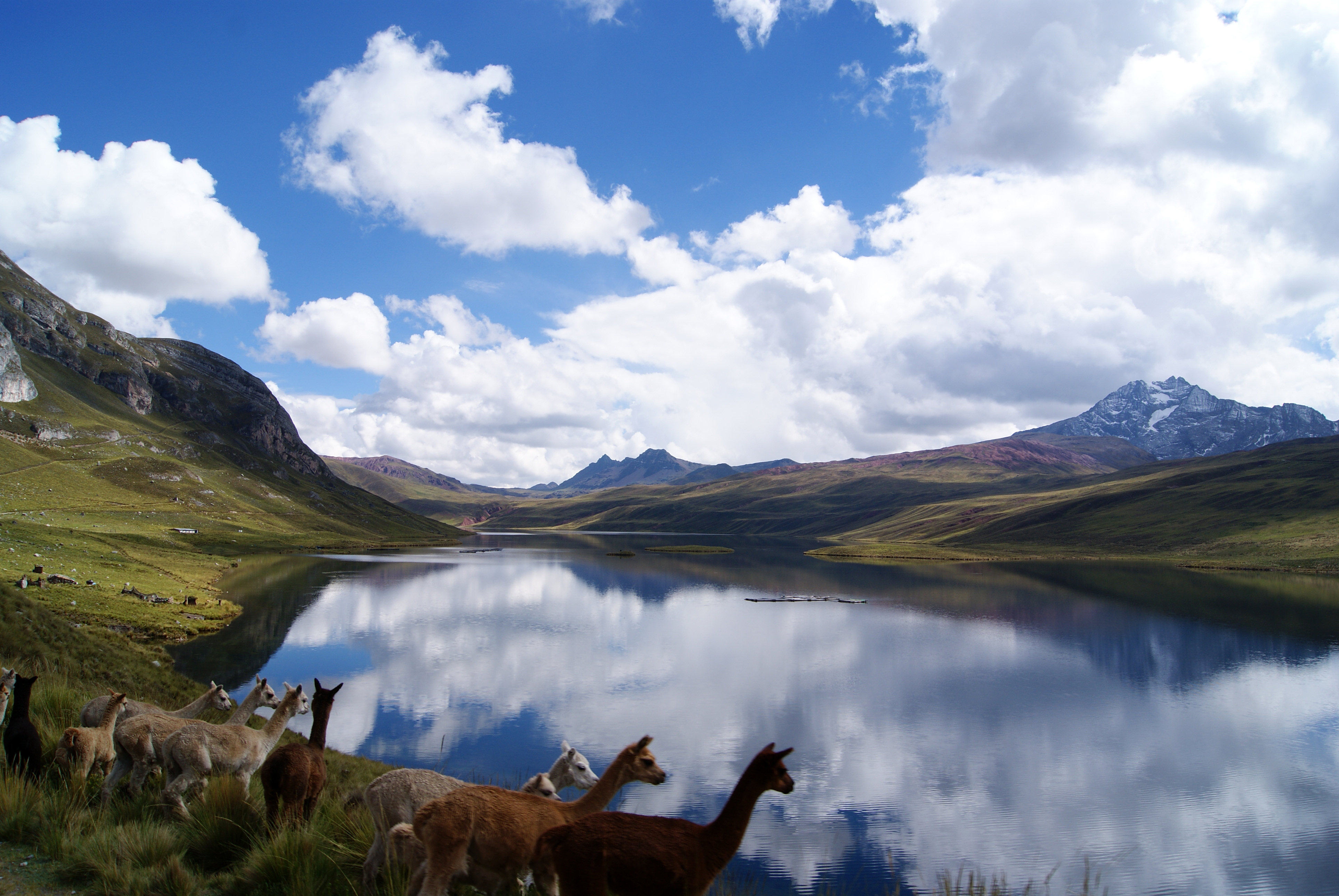
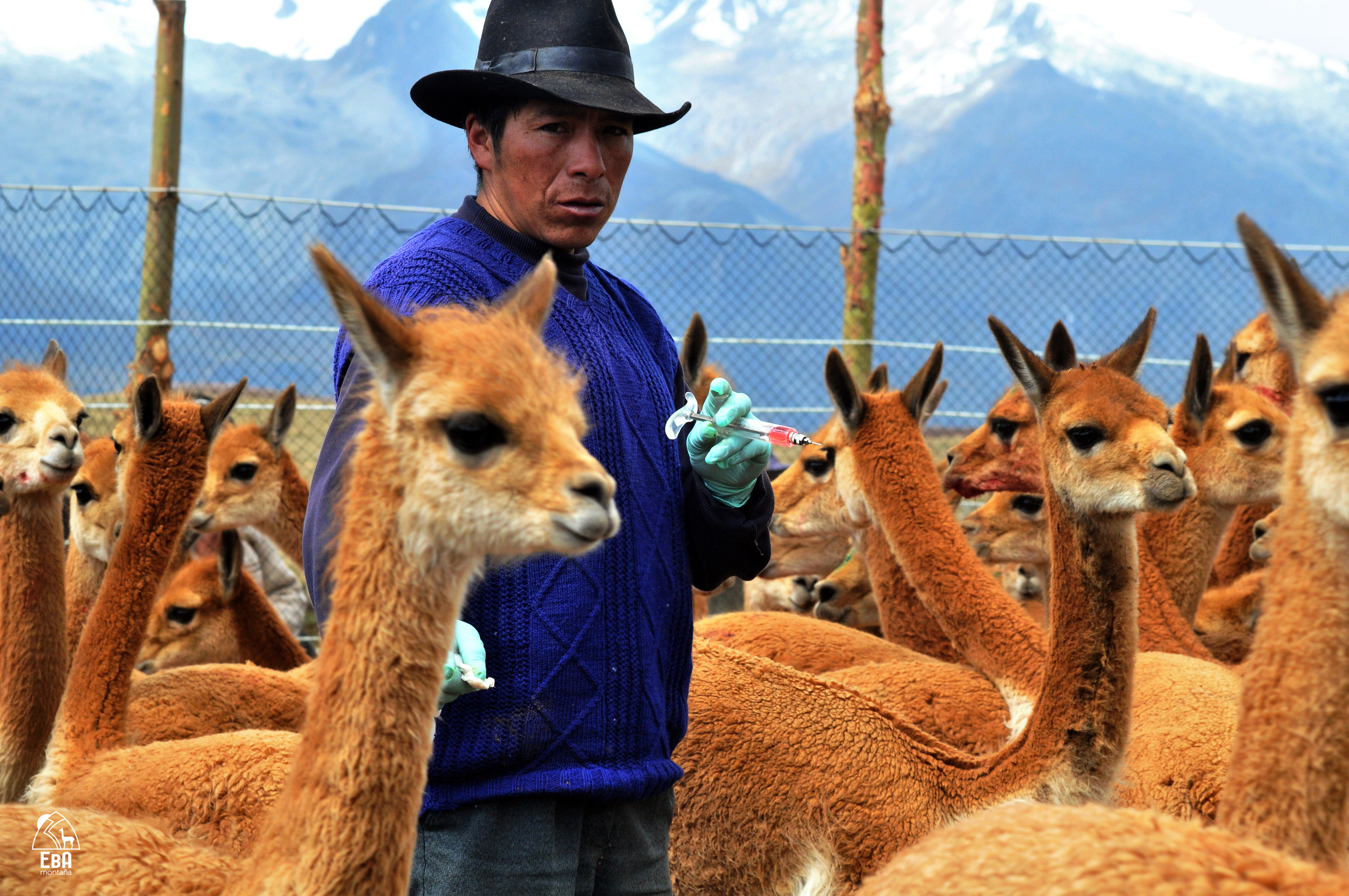

Assessments and Background Documents
'EbA'luacion de la vulnerabilidad al cambio climatico (2015)
Mt EbA Peru Vulnerability & Impact Assessment of RPNYC - Main Study
Mt EbA Peru Vulnerability & Impact Assessment of RPNYC - Context
Mt EbA Peru Vulnerability & Impact Assessment of RPNYC - Future climate scenarios
(2014) Peru Vulnerability and Impact Assessment (VIA) - Technical Summary
Reports
Brochures, Posters, Communications Products
Knowledge Products
Cambio climático en la Reserva Paisajística Nor Yauyos Cochas
El proyecto EbA Montaña trabaja con el SERNANP y las comunidades campesinas de la Reserva Paisajística Nor Yauyos Cochas para que se adapten al cambio climático. Conoce más del proyecto y las medidas de adaptación basada en ecosistemas que vienen implementando en este video.
The objective of this Peru pilot project under the global Ecosystem-based Adaptation (EbA) in Mountains Programme was to reduce the vulnerability of Peru to climate change impacts through piloting EbA options with particular emphasis on mountain ecosystems in the Nor Yauyos-Cochas Landscape Reserve.
It supported four outputs:
- The development of decision making tools for ecosystem based adaptation for assessing ecosystem resilience,
- Field testing the tools in the pilot countries,
- Making investments in and building capacity for EbA at select demonstration sites, and
- Establishing the economic benefits and financial costs of EbA, to guide national policies.
The project is a collaborative initiative of the United Nations Environment Programme (UNEP), the International Union for Conservation of Nature (IUCN) and the United Nations Development Programme (UNDP), funded by Germany’s Federal Ministry for the Environment, Nature Conservation, Building and Nuclear Safety (BMUB). In Peru, the programme is commissioned by the Ministry of Environment of Peru (MINAM for its Spanish acronym) and is implemented in the Nor Yauyos-Cochas Landscape Reserve with the support of the National Service of Natural Protected Areas (SERNANP for its Spanish acronym). The activities under IUCN’s responsibility are implemented in partnership with the Mountain Institute (TMI).
Some key accomplishments for the project include:
- A Vulnerability Impact Assessment (VIA) has been carried out to determine which EbA interventions can be used to support the communities in the selected project area.
- Three vulnerable areas have been identified in the NYCLR: Canchayllo, Miraflores and Tanta. Two EbA measures per area are being implemented.
- Information from the VIA (Vulnerability and Impact Assessment) for the NYCLR is being incorporated into the updated version of the NYCLR Master Plan.
- Support to both regional governments in Junin and Lima in the updating of their Regional Climate Change Strategies and the addition of EbA approaches to these tools.
- A local Communication Network for the NYCLR has been developed by the project. 11 park rangers and 21 students of the NYCLR have learnt about climate change and how to use communication tools for their own development.
- In Tanta, the community decided to free the Moyobamba area (vicuña natural habitat) of domestic animals to be an exclusive area for vicuñas.
- Capacity building and technical assistance in livestock and vicuña management, including animal husbandry of vicuña population.
- Installation of fences in 2000 hectares of communal land for livestock, and conservation of 1500 hectares of vicuña habitat.
- In Miraflores and Canchayllo no regret measures are being implemented. In both places local villagers have become local researchers and have strengthen their capacity in pasture and water management.
- In Canchayllo, a natural water reservoir dam was restored to reduce water filtration and ensure its storage during the dry season. Also, an underground pipe was restored to transport water from the upper part of the watershed (near Chacara Lake) to the community farm (Jutupuqio).
- In Miraflores, a protection zone (5ha) was enlarged around the Yanacancha lakes encircling the upper micro-watershed in order to prevent cattle and other animals from entering the area.
Policy-related accomplishments:
- In August 2015, Peru officially approved Policy Guidelines for Public Investment in Biodiversity and Ecosystems, with the expectation that this instrument will facilitate new and additional public investment aligned with the National Biodiversity Strategy.
- Of particular interest is that the UNDP BIOFIN and the Peru Mountain EbA projects worked together since February 2015 in close coordination with the Ministries of Environment and Economy and Finance to facilitate the incorporation of climate change and specifically EbA into the guidelines. For example, the consideration of climate change as a cross-cutting issue is included as one of the Strategic Policy Guidelines (p6).
- As next steps, BIOFIN and the Peru Mountain EbA project are collaborating in the design of a pilot Public Investment Project for the community of Tomas in the Nor Yauyos Cochas Landscape Reserve, as an opportunity to replicate EbA actions undertaken in Tanta and taking advantage of the political will and support of the Tomas municipality.
- Following this, UNDP and other agencies will support MINAM and MEF in capacity building of local and regional governments and development of additional pilots, as part of an effort to expand the use out the guidelines at the national level. Technical support will also be provided to develop impact indicators to be used by MINAM and MEF of the biodiversity and ecosystem-focused PIPs.
- The Peru Intended Nationally Determined Contribution (INDC) is currently being developed. The project team has contributed by reviewing the draft and providing recommendations on how to integrate EbA. The draft INDC includes EbA measures in its sector/system specific adaptation contributions for water, agriculture and forestry. The INDC even refers to the Mountain EbA Programme specifically as a key project that has contributed to the adaptation process in Peru.
 Learning by doing: the construction of the approach and program EbA, Lunahuana, Cañete, 25 to May 30, 2015 - The third Global technical workshop on ecosystem-based adaptation learning for the Global Mountain EbA programme, which is running in Nepal, Uganda and Peru, was held. The workshop aimed to identify and assess the contributions that the program has made in EbA mainstreaming in public policies and in building resilience and adaptive capacity of local populations.
Learning by doing: the construction of the approach and program EbA, Lunahuana, Cañete, 25 to May 30, 2015 - The third Global technical workshop on ecosystem-based adaptation learning for the Global Mountain EbA programme, which is running in Nepal, Uganda and Peru, was held. The workshop aimed to identify and assess the contributions that the program has made in EbA mainstreaming in public policies and in building resilience and adaptive capacity of local populations.
 CRiSTAL Parques, 26-29 January, 2015 - Del 26 al 29 de enero de 2015 se aplicó, en la Reserva Paisajística Nor Yauyos Cochas (RPNYC) de Perú, la herramienta CRiSTAL Parques, un instrumento de apoyo a la toma de decisiones que ayuda a los profesionales de la conservación y a los responsables de Áreas Protegidas (AP) a integrar riesgos climáticos en su planificación.
CRiSTAL Parques, 26-29 January, 2015 - Del 26 al 29 de enero de 2015 se aplicó, en la Reserva Paisajística Nor Yauyos Cochas (RPNYC) de Perú, la herramienta CRiSTAL Parques, un instrumento de apoyo a la toma de decisiones que ayuda a los profesionales de la conservación y a los responsables de Áreas Protegidas (AP) a integrar riesgos climáticos en su planificación.
 Ruedo en las alturas - El Chaccu, tradición ancestral de arreo de vicuñas, es hoy una importante medida de adaptación al cambio climático basada en ecosistemas.
Ruedo en las alturas - El Chaccu, tradición ancestral de arreo de vicuñas, es hoy una importante medida de adaptación al cambio climático basada en ecosistemas.
 Dioses del agua - Para los pobladores de Canchayllo, distrito de Jauja, en la Reserva Paisajística Nor Yauyos Cochas, el cambio climático ha sido una buena excusa para el ingenio y los buenos reflejos. Ahí se han modificado comportamientos, infraestructura y organización con el fin de potenciar, conservar y restaurar la administración de pastos y agua de la zona. Esta es su historia.
Dioses del agua - Para los pobladores de Canchayllo, distrito de Jauja, en la Reserva Paisajística Nor Yauyos Cochas, el cambio climático ha sido una buena excusa para el ingenio y los buenos reflejos. Ahí se han modificado comportamientos, infraestructura y organización con el fin de potenciar, conservar y restaurar la administración de pastos y agua de la zona. Esta es su historia.
 Viaje por los ecosistemas del Perú, Lima, 7 December 2014 - Junto a un cuentacuentos y pobladores de la costa, sierra y selva del Perú, los proyectos EbA Montaña, EBA Amazonía y Humboldt del Programa de las Naciones Unidas para el Desarrollo (PNUD), presentaron en el Auditorio Principal de la feria Voces por el clima -espacio para la sociedad civil en el marco de la COP20 en Lima-, “Mi montaña, mi bosque, mi mar: nuestro pan de cada día”, una puesta en escena que utilizó la tradición oral para contar cómo las comunidades se están adaptando al cambio climático.
Viaje por los ecosistemas del Perú, Lima, 7 December 2014 - Junto a un cuentacuentos y pobladores de la costa, sierra y selva del Perú, los proyectos EbA Montaña, EBA Amazonía y Humboldt del Programa de las Naciones Unidas para el Desarrollo (PNUD), presentaron en el Auditorio Principal de la feria Voces por el clima -espacio para la sociedad civil en el marco de la COP20 en Lima-, “Mi montaña, mi bosque, mi mar: nuestro pan de cada día”, una puesta en escena que utilizó la tradición oral para contar cómo las comunidades se están adaptando al cambio climático.
 Presentan avances en el Proyecto EbA Montaña, Huancayo, 4 February 2015 - El 4 de febrero en la ciudad de Huancayo, se reunieron los miembros del Comité Directivo del Proyecto EbA Montaña para informar acerca de los avances del proyecto, discutir el Plan Operativo Anual y la presentación de los resultados del estudio de Vulnerabilidad, Impacto y Adaptación al cambio climático (VIA) en la Reserva Paisajística Nor Yauyos Cochas (RPNYC), área de intervención del proyecto, a cargo del equipo de Centro de Datos para la Conservación (CDC)-Universidad Nacional Agraria La Molina y la Universidad de Columbia.
Presentan avances en el Proyecto EbA Montaña, Huancayo, 4 February 2015 - El 4 de febrero en la ciudad de Huancayo, se reunieron los miembros del Comité Directivo del Proyecto EbA Montaña para informar acerca de los avances del proyecto, discutir el Plan Operativo Anual y la presentación de los resultados del estudio de Vulnerabilidad, Impacto y Adaptación al cambio climático (VIA) en la Reserva Paisajística Nor Yauyos Cochas (RPNYC), área de intervención del proyecto, a cargo del equipo de Centro de Datos para la Conservación (CDC)-Universidad Nacional Agraria La Molina y la Universidad de Columbia.
 Proyecto EbA Montaña participa en el Foro Mundial de Montañas en Cusco, 23-25 May 2014 - El Foro Mundial de Montañas (WMF, por sus siglas en inglés) -un espacio de encuentro para la ciencia, los tomadores de decisión y los activistas del Desarrollo Sostenible de las Montañas del mundo- se desarrolló en Cusco, Perú del 23 al 25 de mayo de 2014. El objetivo fue crear un espacio que permita la discusión y el intercambio de experiencias en temas vinculados al cambio climático, agricultura familiar, comunidades y ciudades de montaña, en el marco del trabajo en los ecosistemas de montaña.
Proyecto EbA Montaña participa en el Foro Mundial de Montañas en Cusco, 23-25 May 2014 - El Foro Mundial de Montañas (WMF, por sus siglas en inglés) -un espacio de encuentro para la ciencia, los tomadores de decisión y los activistas del Desarrollo Sostenible de las Montañas del mundo- se desarrolló en Cusco, Perú del 23 al 25 de mayo de 2014. El objetivo fue crear un espacio que permita la discusión y el intercambio de experiencias en temas vinculados al cambio climático, agricultura familiar, comunidades y ciudades de montaña, en el marco del trabajo en los ecosistemas de montaña.
 EbA Montaña en Perú identifica vulnerabilidad e impacto frente al cambio climático de la RPNYC, 26 March 2014, se presentó en la Universidad Nacional Agraria La Molina (UNALM) la Evaluación de Vulnerabilidad e Impacto (EVI) frente al cambio climático de la Reserva Paisajística Nor Yauyos Cochas, el cual forma parte del proyecto Adaptación basada en Ecosistemas de Montaña (EbA Montaña) en Perú. Fue preparado entre agosto de 2012 y diciembre de 2013 gracia a un acuerdo entre el Programa de las Naciones Unidas para el Medio Ambiente (PNUMA) y la Fundación para el Desarrollo Agrario (FDA) de la UNALM.
EbA Montaña en Perú identifica vulnerabilidad e impacto frente al cambio climático de la RPNYC, 26 March 2014, se presentó en la Universidad Nacional Agraria La Molina (UNALM) la Evaluación de Vulnerabilidad e Impacto (EVI) frente al cambio climático de la Reserva Paisajística Nor Yauyos Cochas, el cual forma parte del proyecto Adaptación basada en Ecosistemas de Montaña (EbA Montaña) en Perú. Fue preparado entre agosto de 2012 y diciembre de 2013 gracia a un acuerdo entre el Programa de las Naciones Unidas para el Medio Ambiente (PNUMA) y la Fundación para el Desarrollo Agrario (FDA) de la UNALM.
Global Ecosystems Based Adaptation in Mountains Programme
Human wellbeing and livelihoods cannot be sustained without healthy ecosystems. Mountain ecosystems are particularly important, in that they maintain rich ecological processes and provide essential goods and services, especially water, not only to mountain people, but also to downstream lowlands where demand from population centers, agriculture and industry is high. These ecosystems, however, face severe threats from unsustainable land use practices (overgrazing and non-conservation agriculture), illegal wood extraction, development of large-scale infrastructure (dams, roads) and unsustainable natural resource projects (hydrocarbons, mining).
Climate change further compounds these threats by increasing levels of exposure to droughts, floods (which in turn results in an increase in landslides) and changes in seasonality. These impacts both undermine the resilience of the mountain ecosystems and increase the vulnerability of the local mountain communities, whose livelihoods and wellbeing depend on their services. Mountain people tend to be among the world’s poorest and most marginalized populations. Not only do many share the disadvantages of rural poverty and ethnic or religious discrimination. They also face additional challenges to subsistence brought about by elevation, rough topography and severe climate.
Through the global Ecosystems-based Adaptation (EBA) in Mountains Programme, UNDP, UNEP and IUCN, with funding from the German Government, used sustainable management, conservation and restoration of ecosystems, as part of an overall adaptation strategy, to reduce the vulnerability and enhance the resilience of select fragile mountain ecosystems and their local communities to climate change impacts.
Photos provided by: UNDP Peru, Carlos Diaz Huertas and Adriana Kato, UNDP Nepal, Tine Rossing, Andrea Egan, UNDP Uganda, Ed Barrows and James Leslie.
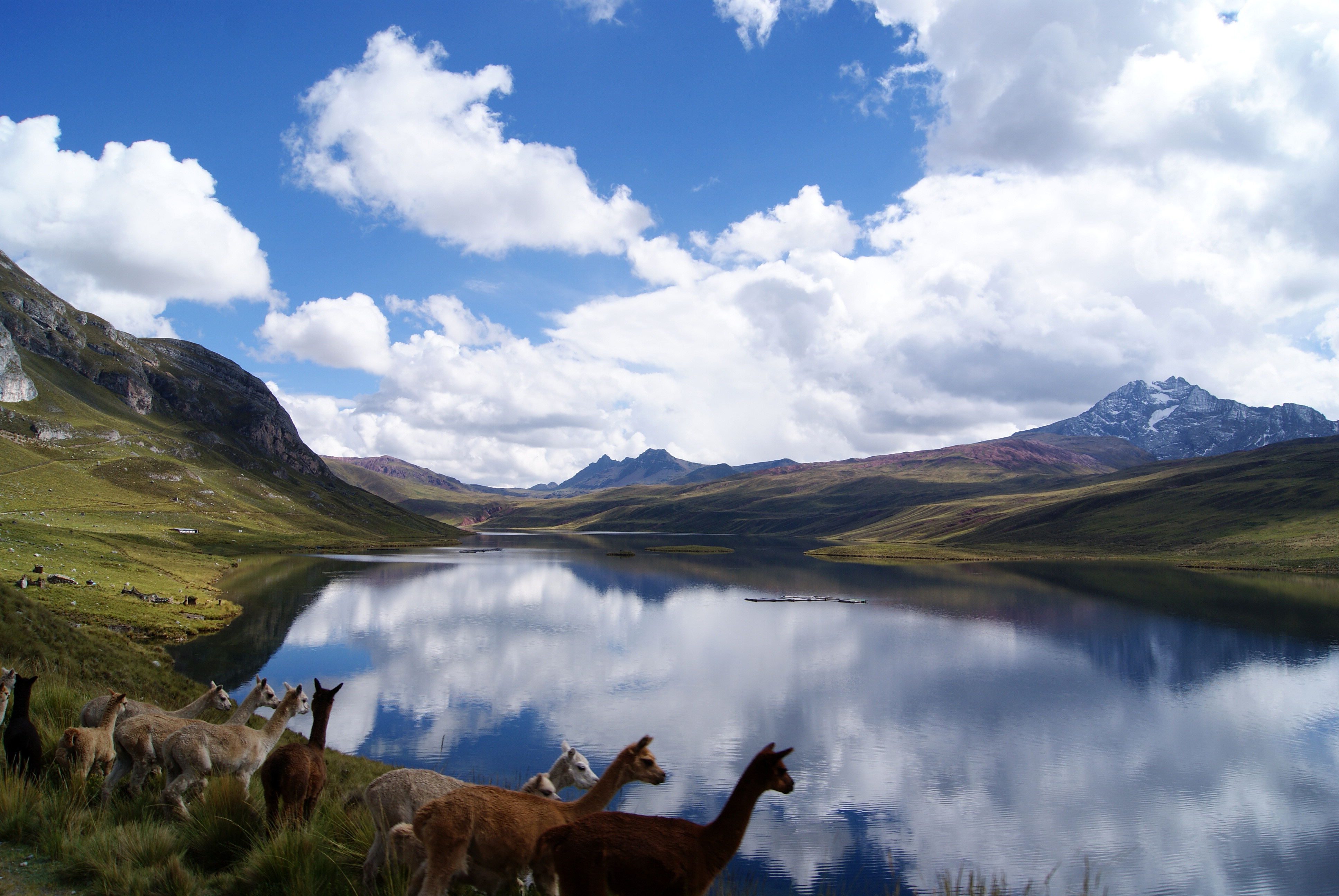

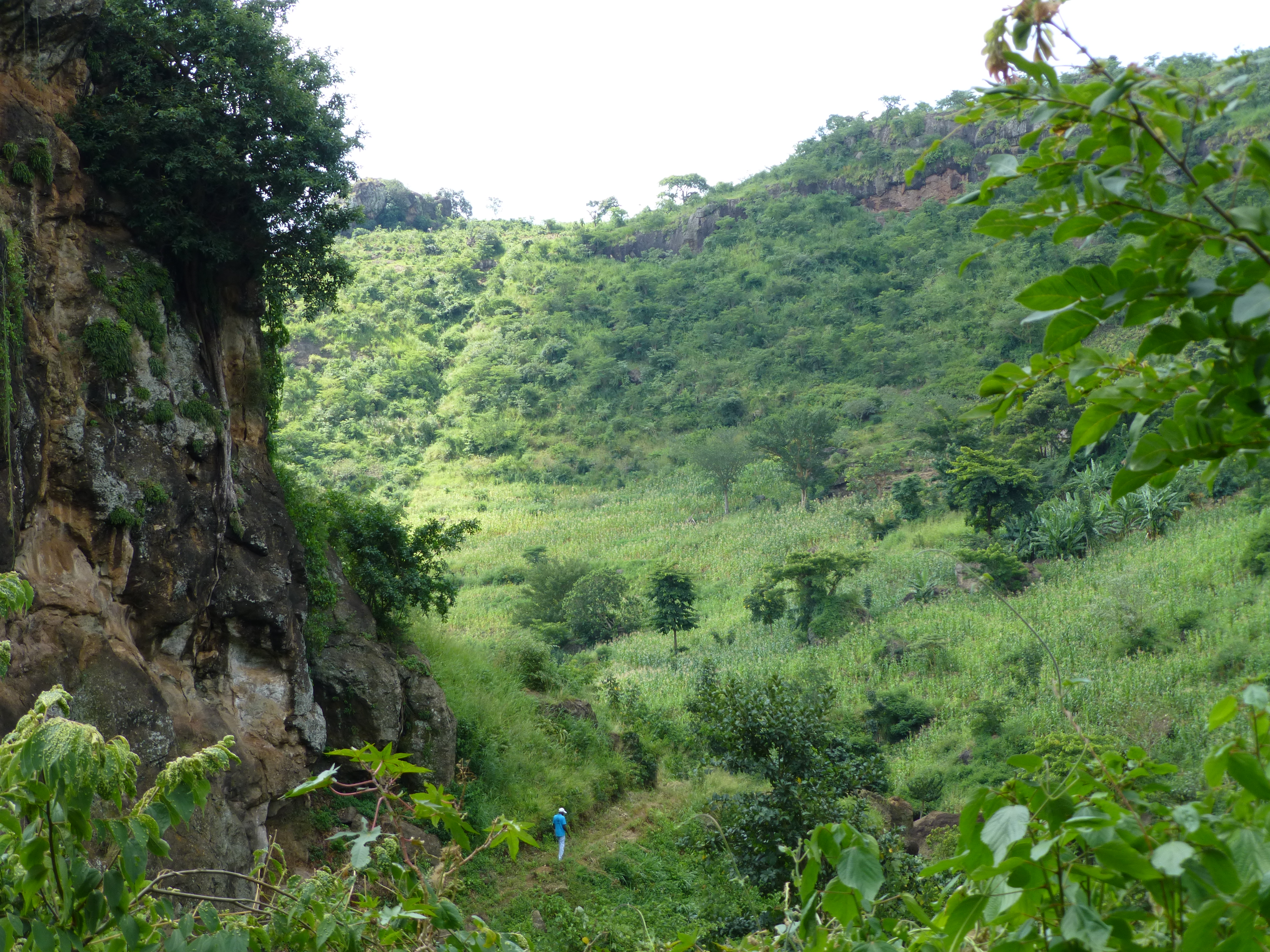
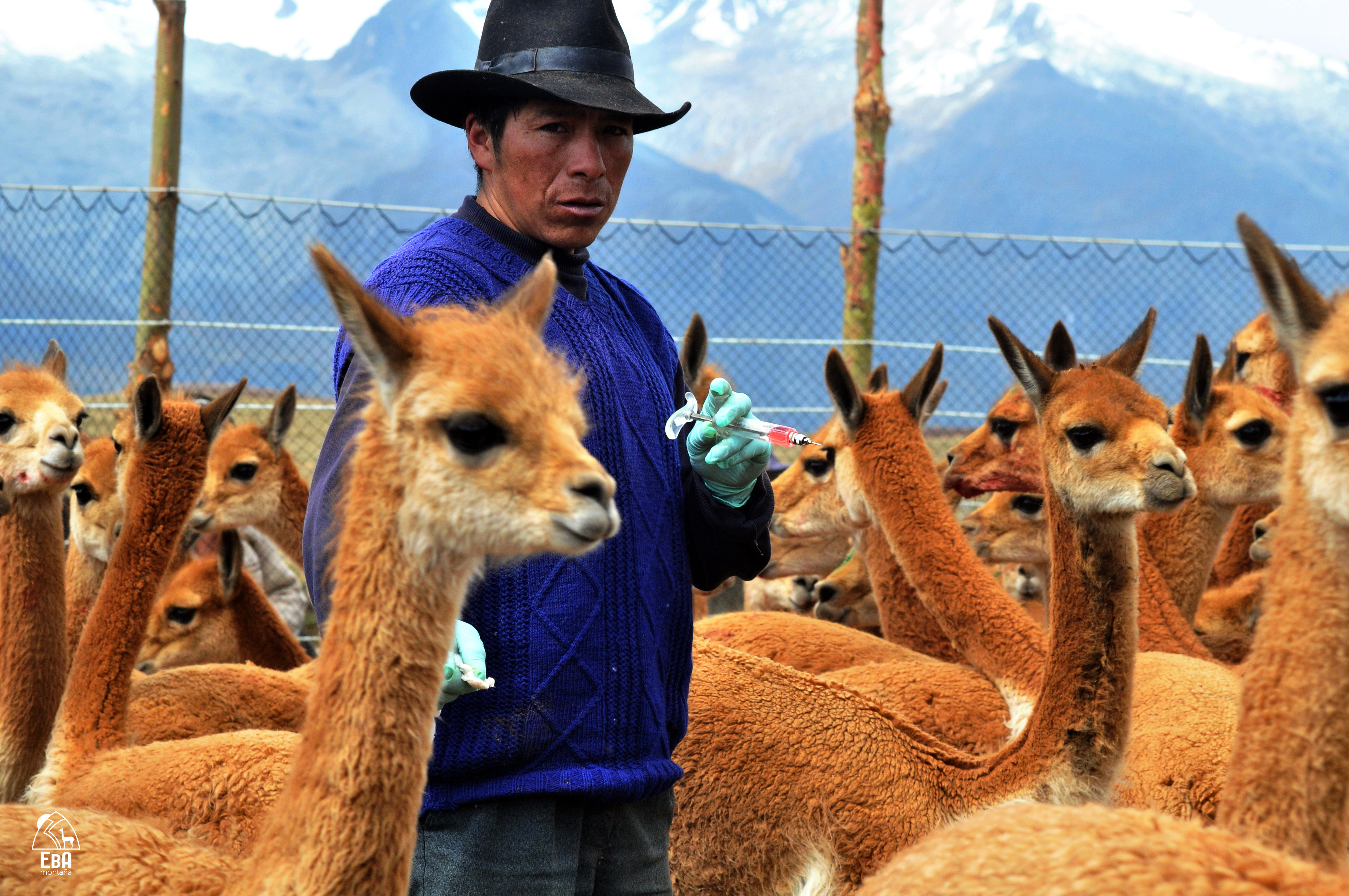
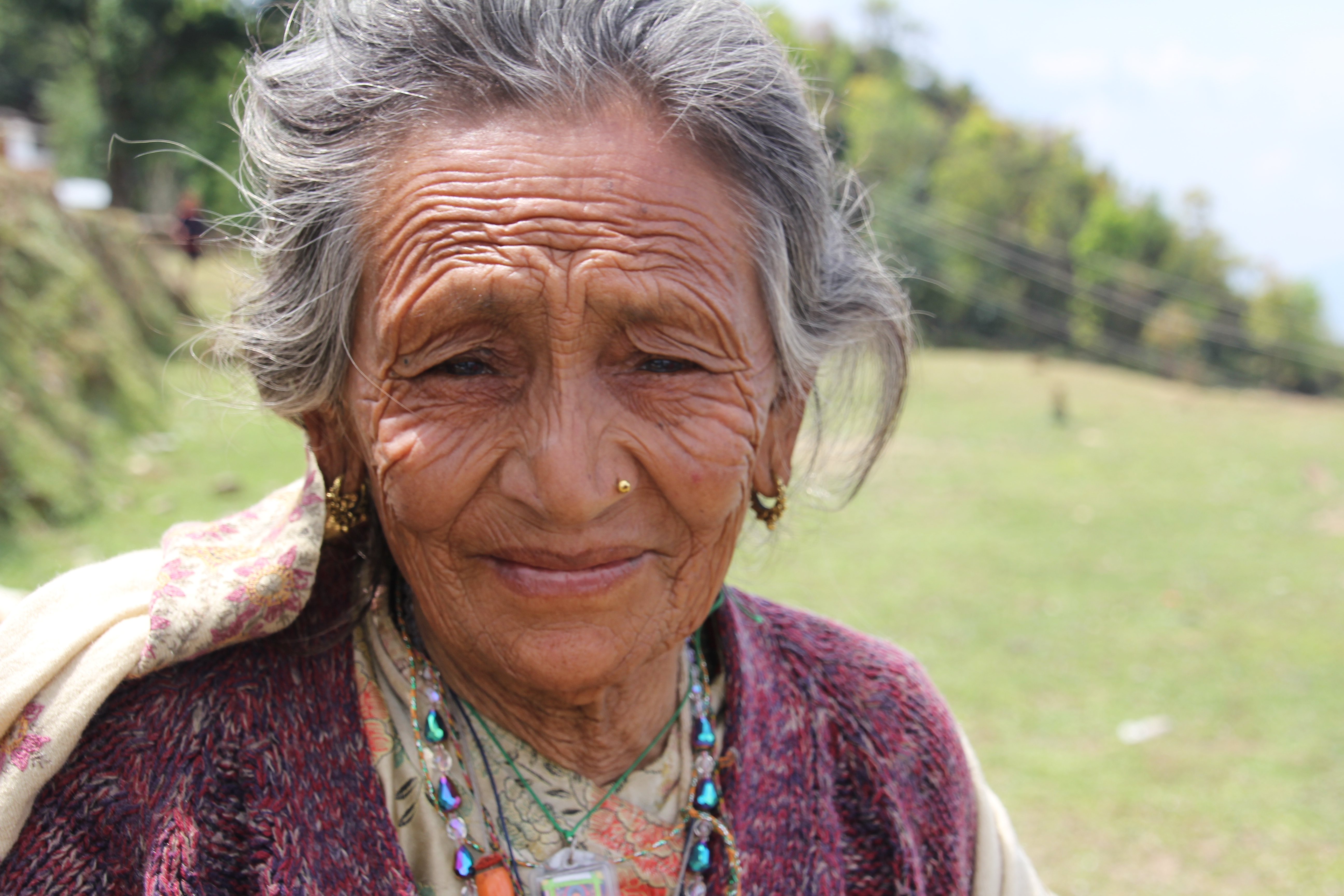
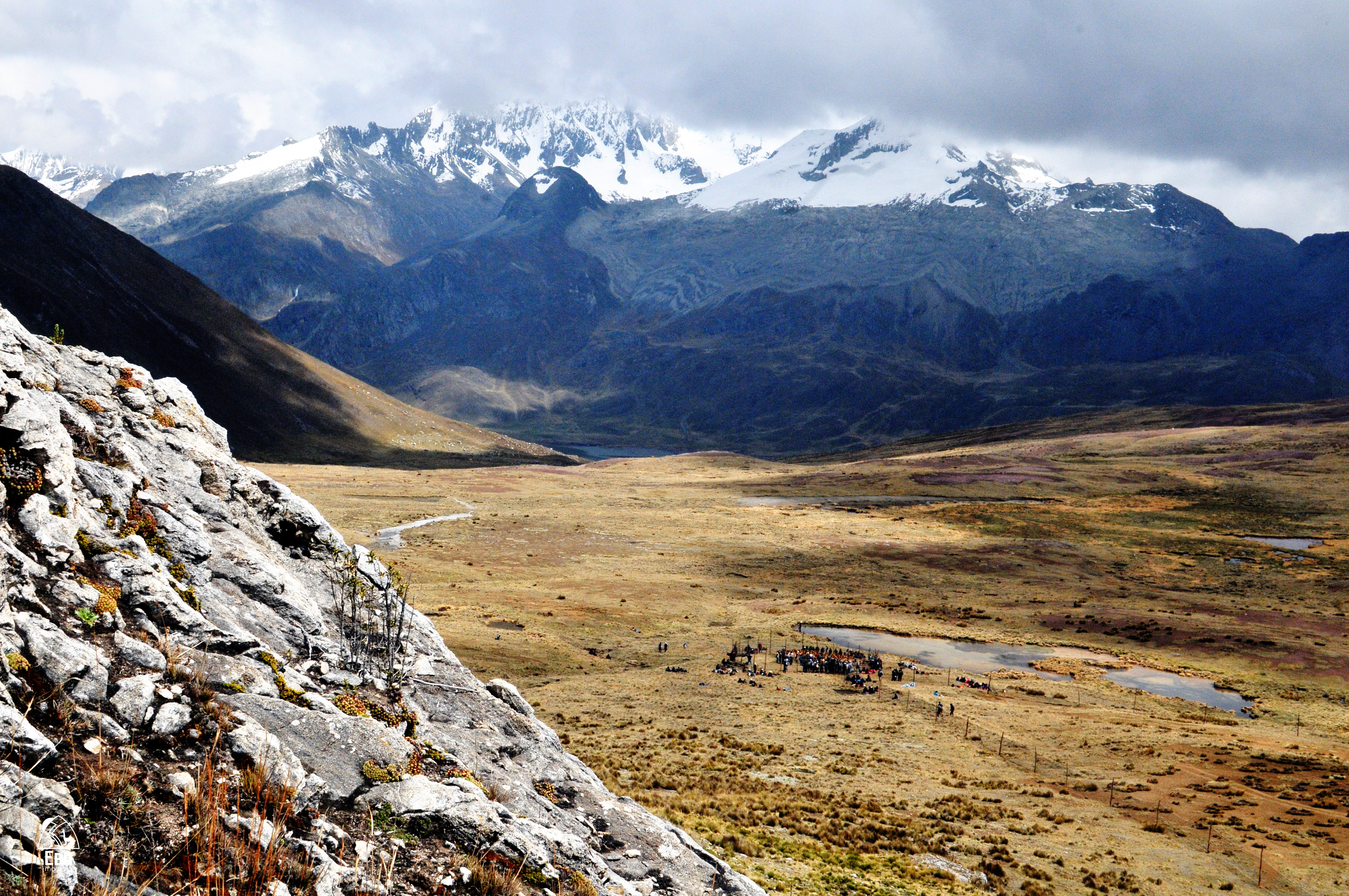

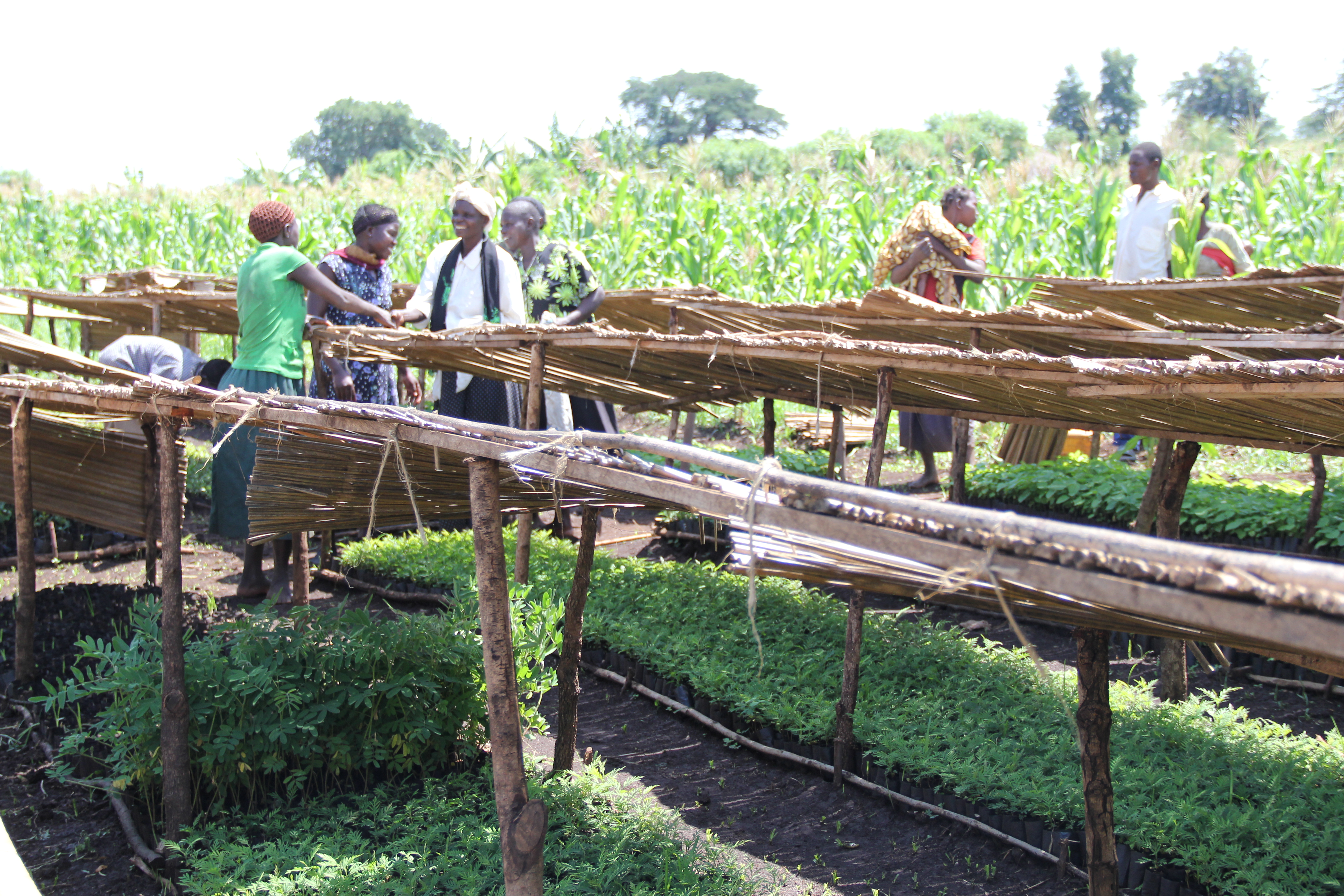

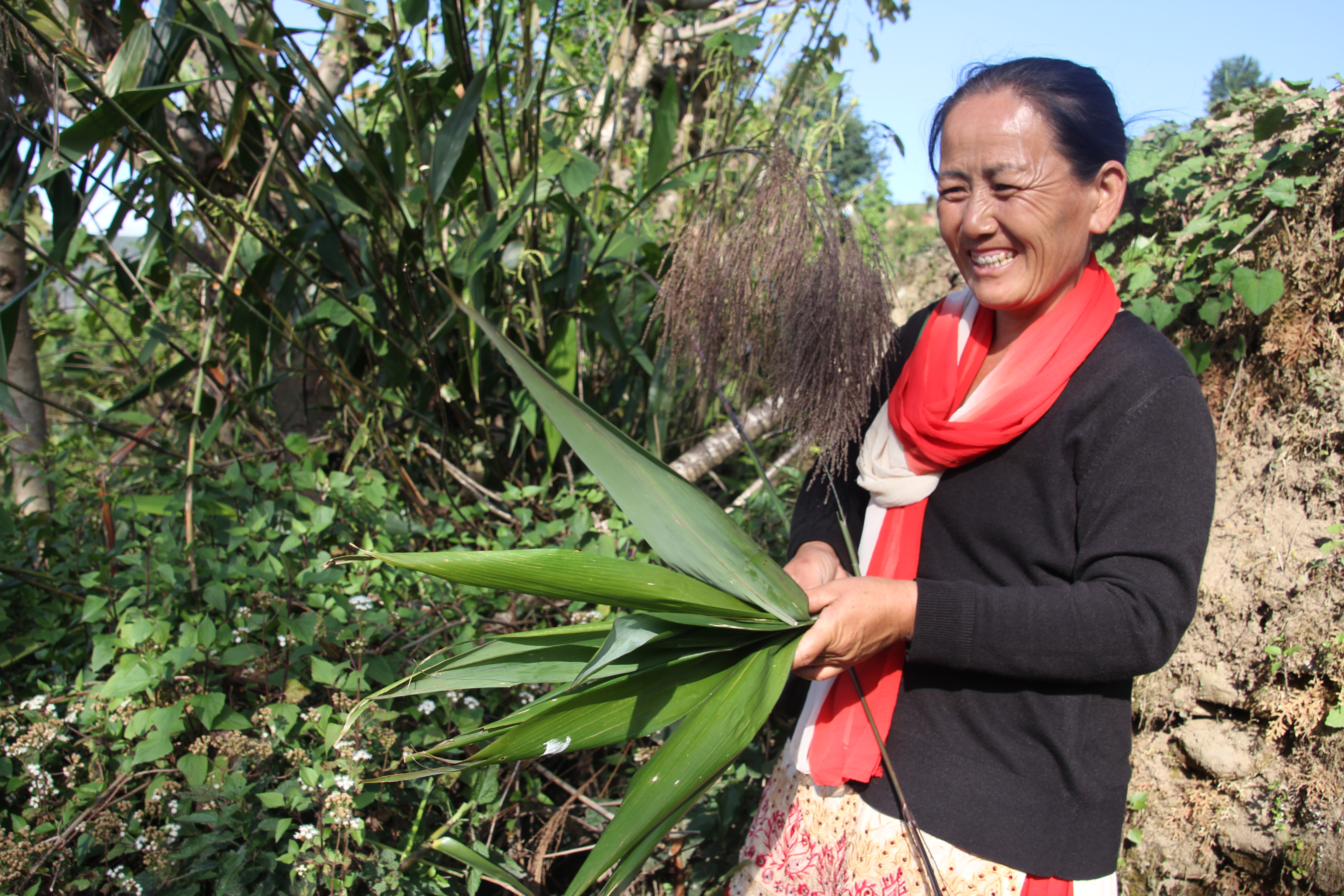
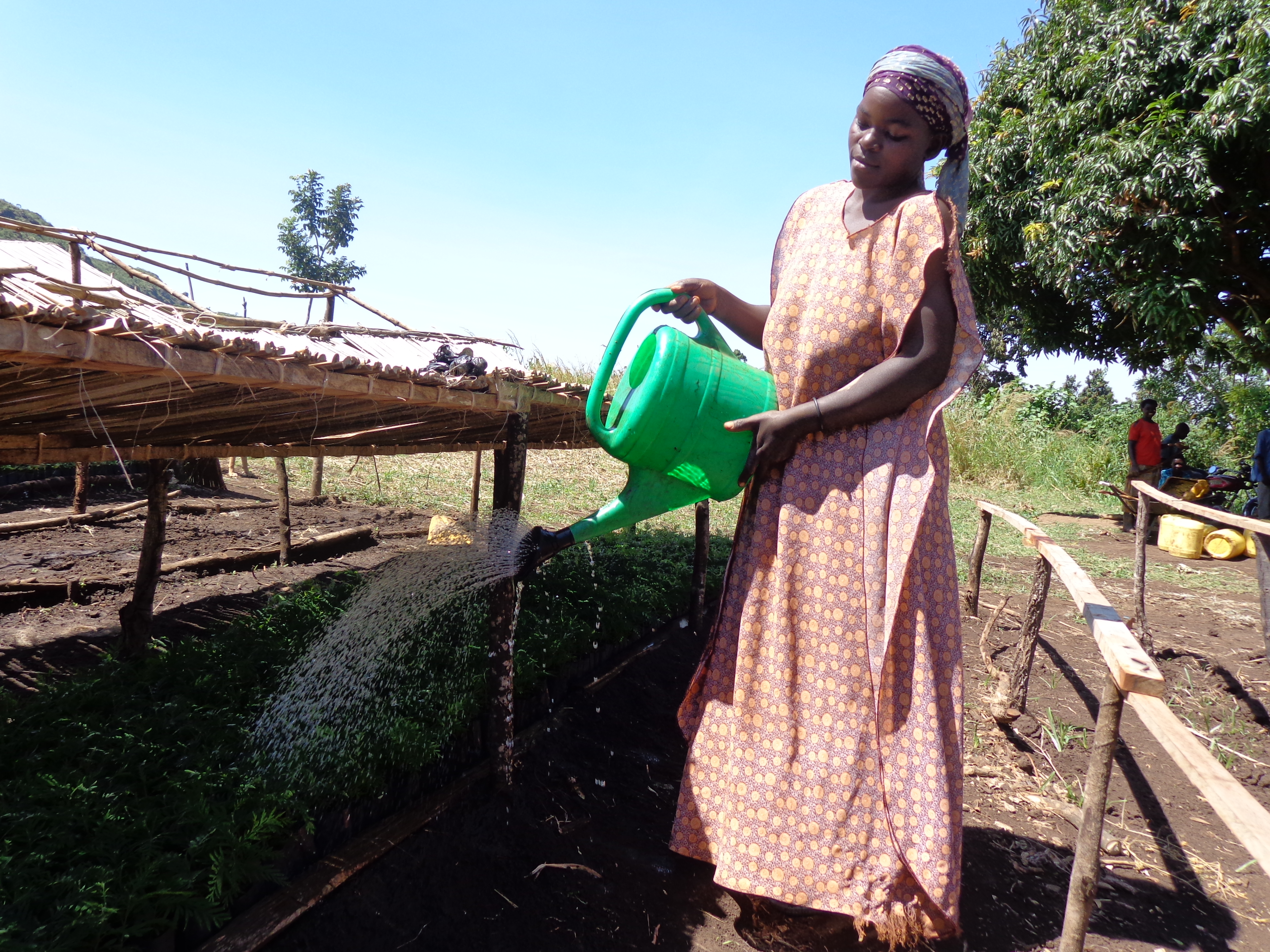
Assessments and Background Documents
Making the Case for Ecosystem-based Adaptation: The Global Mountain EbA Programme in Nepal, Peru and Uganda.
Project Brief / Fact Sheet
Learning Brief 4 - Making the case for policy change and financing for Ecosystem-based Adaptation
Learning Brief 3 - Making the economic case for Ecosystem-based Adaptation
Learning Brief 2 - Generating multiple benefits from Ecosystem-based Adaptation in Mountain Ecosystems
Learning Brief 1 - Introduction to Ecosystem-based Adaptation: A nature-based response to climate change
Training & Tools
UNEP-WCMC (2015) VIA Guidance Document: Executive Summary - RU
UNEP-WCMC (2015) VIA Guidance Document: Executive Summary - PT
UNEP-WCMC (2015) VIA Guidance Document: Executive Summary - SP
UNEP-WCMC (2015) VIA Guidance Document: Executive Summary - FR
Brochures, Posters, Communications Products
Mt EbA Programme (2014) Programme Brochure: Ecosystem-based Adaptation: Adapting to Climate Change in Mountain Ecosystems
UNEP (2010) Making the Case for Ecosystem-based Adaptation (Mt EbA Programme)
The Ecosystems-based Adaptation (EbA) in Mountains Programme is a global partnership jointly implemented by UNDP, UNEP and IUCN from 2011-2015, with funding from the Germany’s Federal Ministry for the Environment, Nature Conservation, Building and Nuclear Safety (BMUB). While global in scope, Uganda, Nepal and Peru were selected as pilot countries, due to their significant vulnerability to climate change, coupled with their endowment of fragile mountain ecosystems upon which a multitude of communities and economic activities depend.
The overarching Programme goal is to strengthen capacities of the involved governments and local communities to reduce vulnerability and increase resilience to the effects of climate change using EbA measures in targeted mountain ecosystems.
Expected programme results include:
- New and field tested methodologies and decision-making tools for EbA, including Vulnerability & Impact Assessments;
- Monitoring and Evaluation centered on ecosystem resilience; and
- Capacities and knowledge of all involved stakeholders (national, district and local level government, local communities and civil society organizations) will be enhanced for planning and implementing both early action “No Regrets” and longer-term EbA measures through pilot activities in target mountain ecosystems.
Based on evidence emerging from these processes, lessons will also be generated on how to use cost-benefit analyses to make an economic case for specific EbA measures. In close collaboration with key governments agencies, evidence and lessons will be generated on how to mainstream EbA into broader district and national policy and financing frameworks. These lessons can be scaled-up and shared as policy examples at regional and global levels beyond the three pilot countries. Overall, the resilience to climate change of targeted mountain ecosystems and their local custodians will be enhanced.
Outcome 1: Methodologies and tools for EbA decision making developed. The application of appropriate scientific methodologies and tools to assist decision makers on the effectiveness of the interventions is a critical ingredient of successful EbA approaches. In each pilot country, this outcome will finance a process that will assess, evaluate and develop appropriate methodologies for use in informing project adaptation actions. Additional results that will be generated include development of project baselines as well as comprehensive monitoring and evaluation mechanisms to monitor programme impacts. Indicators will be developed to specifically measure impacts related to ecosystem functioning and adaptive capacity.
Outcome 2: EbA methodologies and tools applied at ecosystem level. This outcome will finance the development of a capacity building approach that, in turn, will be used to apply the methodologies and tools developed under Outcome 1. In order to ensure sustainability in the use of the tools as well as ensuring that results from the programme are integrated in national processes, relevant stakeholders who were to be involved in the programme will be trained in the use and application of the tools.
Outcome 3: EbA pilot projects implemented in each pilot country and contributing towards ecosystem resilience and reduction of livelihood vulnerability in the face of climate change impacts. A number of EbA activities will be identified and selected for implementation based on the outputs of outcomes 1 and 2. In addition, 1) institutional roles and responsibilities for EbA will be agreed to by different stakeholders at all levels; 2) Institutional capacity of local governments and other key national institutions to plan, monitor and enforce EbA will be enhanced; 3) pilot projects focusing on water resources management and enhancement of soil conservation measures will be implemented; 4) market opportunities and access will be enhanced; and 5) lessons learned from pilot projects will be captured and disseminated.
Outcome 4: Business case for EbA at the local and national levels developed. To make an economic case for EbA, the project will identify and apply the best methods and practice for socio-economic evaluation of adaptation options. This will provide an economic justification for support from relevant government institutions for the use of EbA as a climate risk management strategy. To this end, i) an enabling environment for scaling-up EbA at national level will be created; and ii) information and capacities of key government stakeholders will be enhanced so as to integrate EBA into national development planning processes and climate change policies and strategies.
Outcome 5:New learning and knowledge on EbA generated. In early 2014, the scope of the Programme was expanded to include a new Learning and Knowledge Component. These new activities will strengthen learning about EbA at various levels namely 1) site level – i.e. the three pilot sites in Nor Yauyos-Cochas, Mount Elgon and Panchase – 2) country level (Peru, Uganda and Nepal), and 3) beyond (inter-country, regional and global levels). Systematization of generated information and learning wil be used by partners to generate new science, insights and messages that can influence policy and practice on EBA in mountain ecosystems and beyond. The application of methodologies and tools, combined with implementation of pilot activities, will enable the Programme to shorten the learning curve for local and national institutions, and fast-track the transfer of knowledge and experience in building ecosystem and social resilience to climate change.
The EbA Mountain Ecosystems Programme is working in designated project sites in Nepal, Peru, and Uganda.
Biodiversity Conservation and Watershed Management in Haiti
The project “Increasing the Resilience of Ecosystems and Vulnerable Communities through Biodiversity Conservation and Watershed Management in Haiti” (2015 - 2021) had the twin objectives of reducing communities' vulnerability to the effects of climate change, and conserving threatened coastal and marine biodiversity.
The project looked at spatially configuring watersheds and coastal areas in order to increase the resilience of ecosystems and vulnerable communities to climate change and anthropic threats.
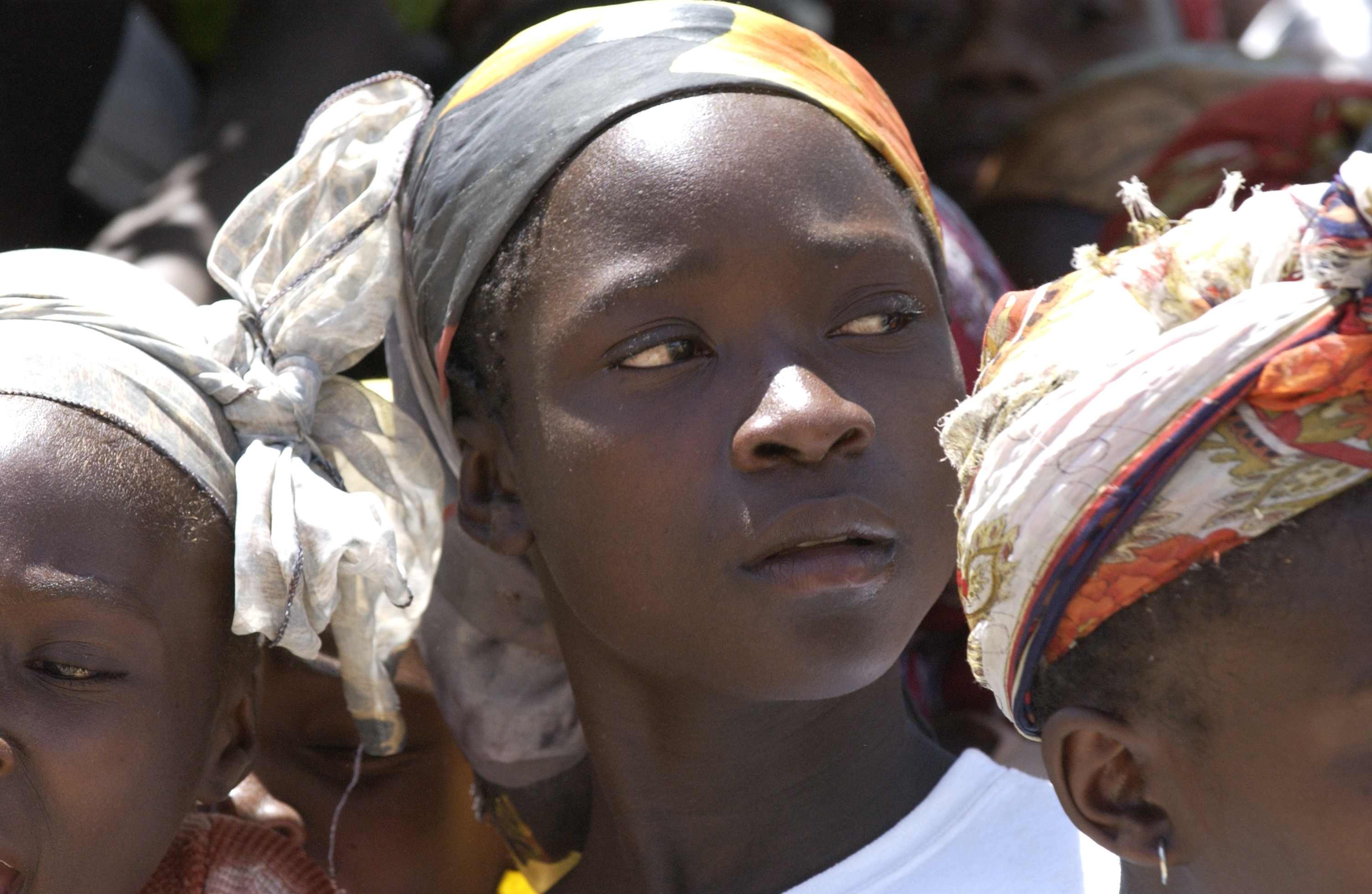

PIFs
Haiti – LDCF/GEF Trust Project Identification Form (12 April 2013)
(More information to come)
The project has two main components with the following associated outputs –
- Increased resilience to climate threats in key watersheds and coastal ecosystems through an improved governance framework including policies, plans and decision making for ecosystem-based adaptation (Output 1.1); conservation and effective management of ecosystems to promote ecosystem based adaptation including the development of models for climate-resilient natural resource management (Output 1.2) and; assisted rehabilitation to recover ecosystem functionality (Output 1.3).
- Establishment and management of PAs in the marine and coastal zones of target watersheds through refined proposals for the PA estate in the MCZ (Output 2.1) and; strengthening instruments and capacities for the effective management of Pas (Output 2.2).
(More information to come)
(More information to come)
Adaptation to Climate Change through Integrated Water Harvesting Technologies in Yemen
As a Least Developed Country (LDC), Yemen is highly vulnerable to climate change-related impacts such as drought, extreme flooding, and sea level rise. These are serious concerns as Yemen's economy largely depends on its natural resources. In addition to having a predominantly semi-arid to arid climate, more than half the agriculture is rain-fed. Coupled with a rise in both droughts and floods, the Yemenis face an acute challenge in adapting to climate change induced stress on water resources.
Thus, the project “Adaptation to Climate Change through Integrated Water Harvesting Technologies in Yemen” aimed to reintroduce traditional and innovative water harvesting techniques to improve water availability to rainfed farmers and pastoralists who are highly vulnerable to climate change.
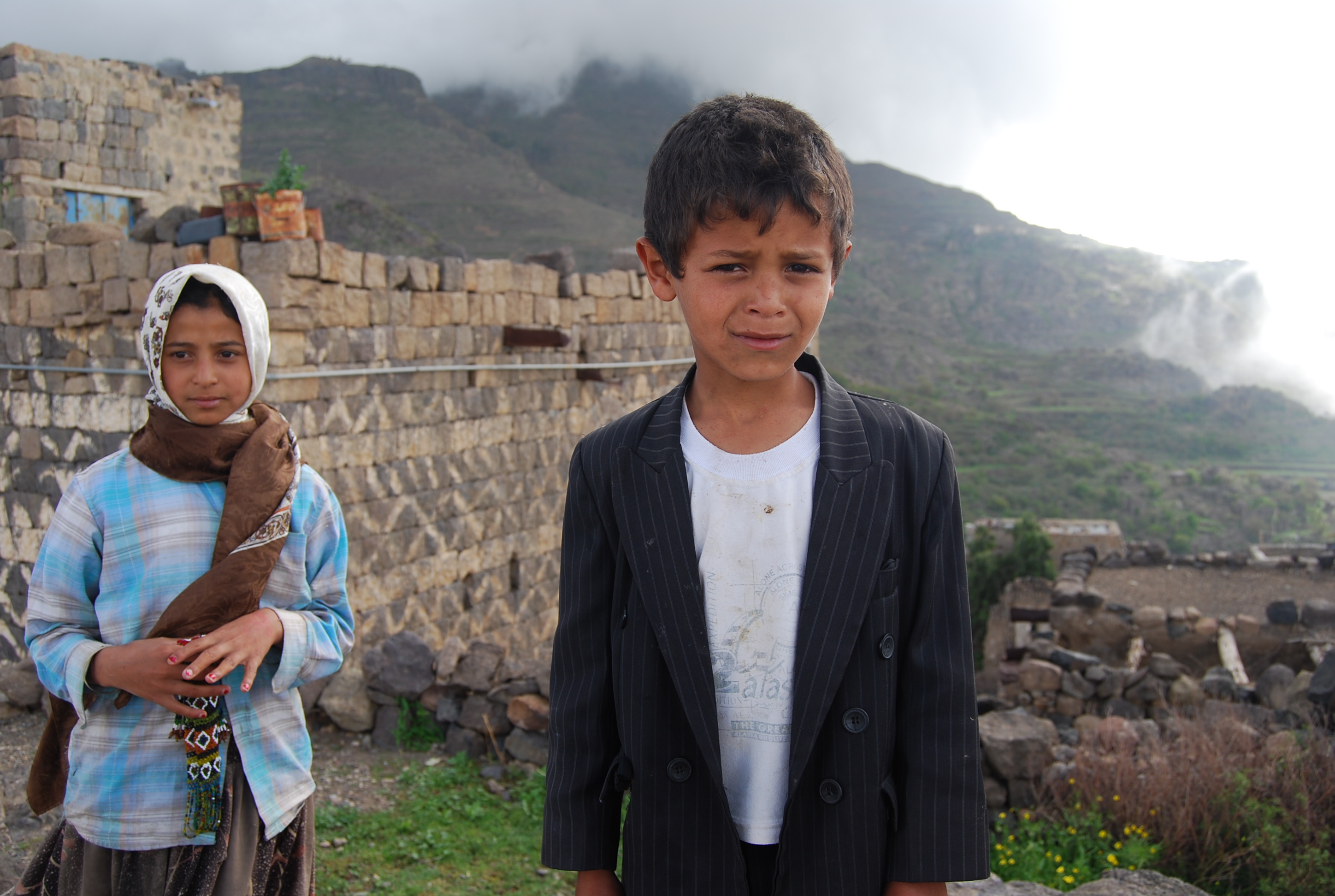

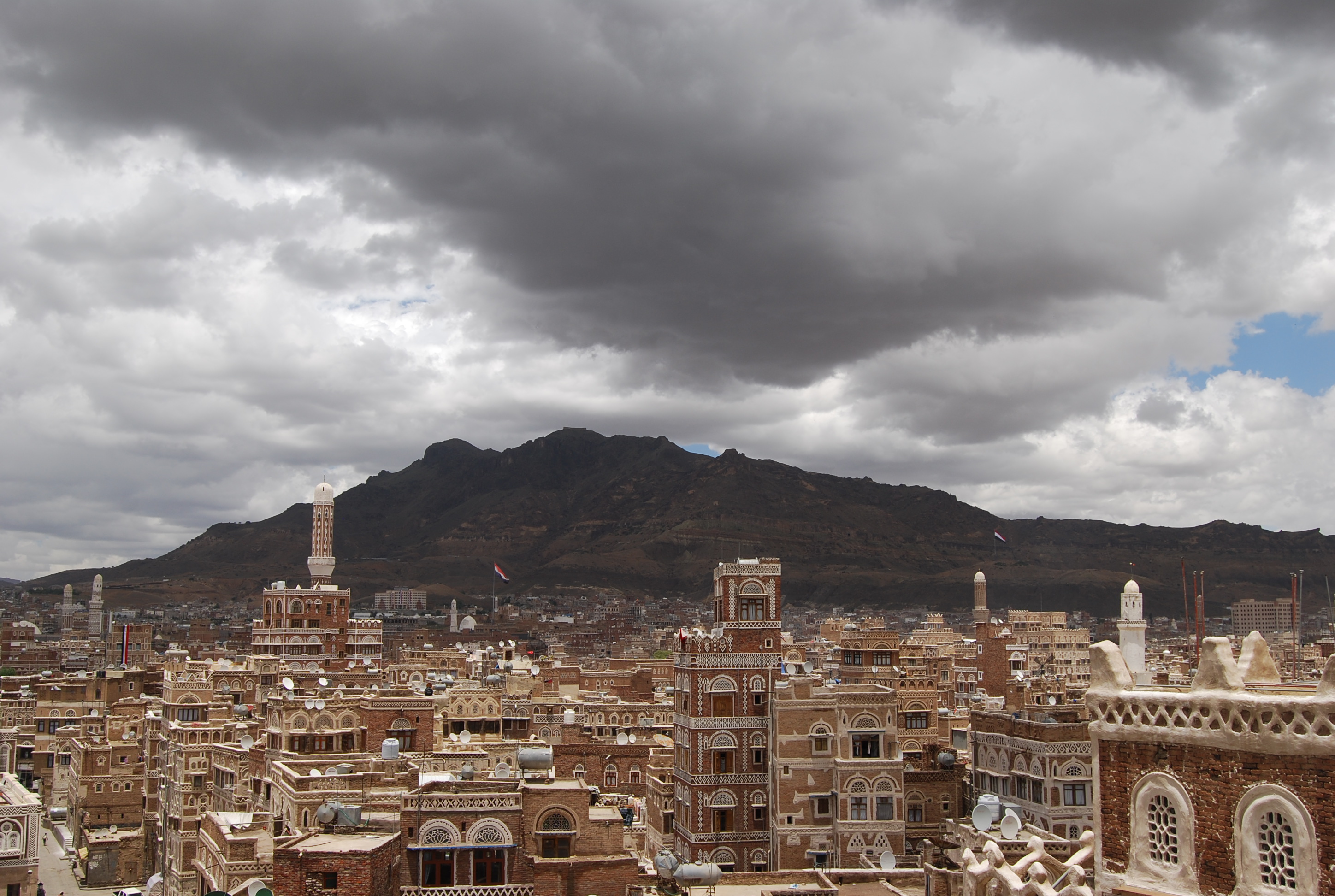
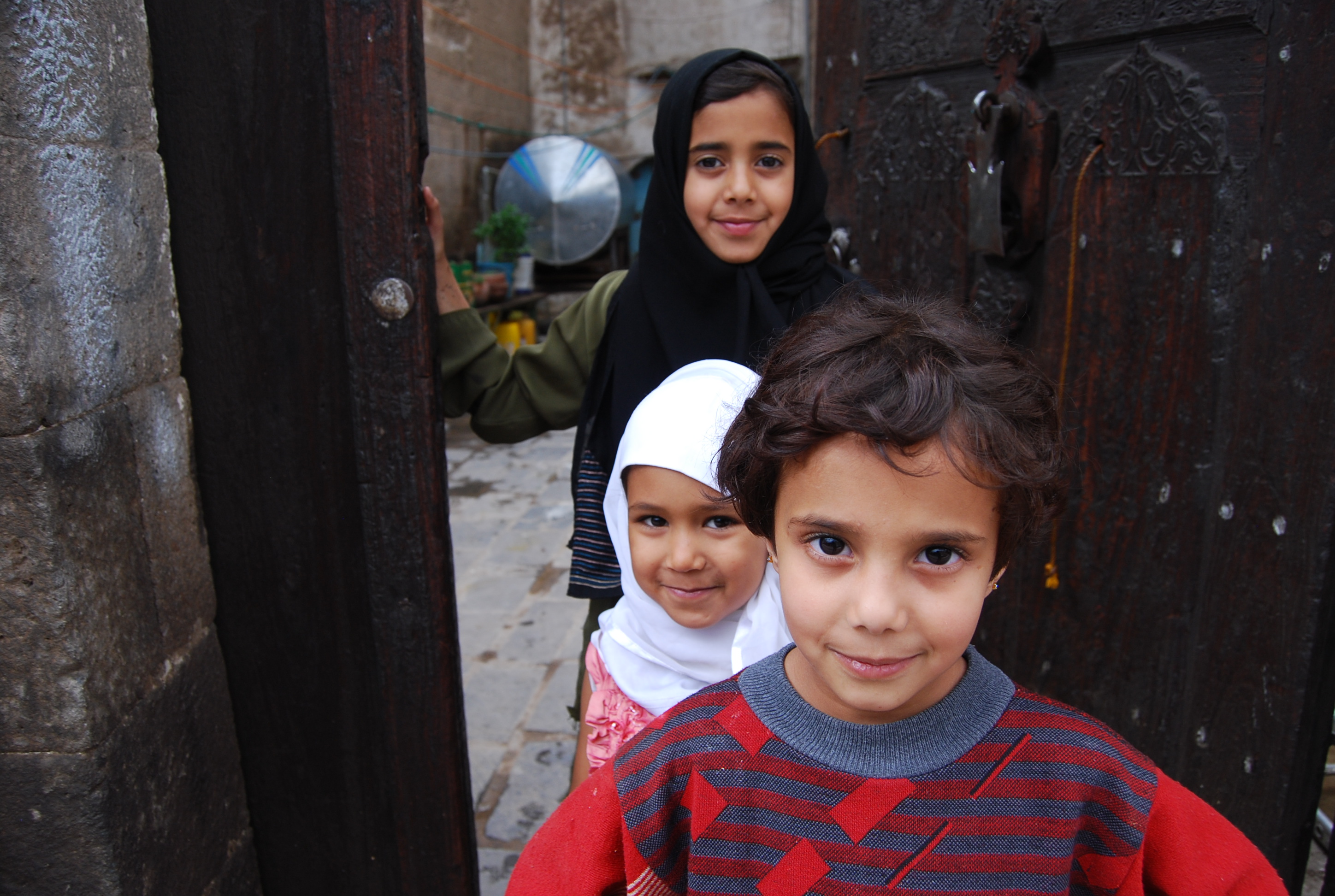
PIFs
(More information to come)
The project has three main components with the following associated outcomes –
- Development of policies for traditional and innovative water harvesting systems including development of GIS-based rainfall-runoff models (Output 1.1); integration of water harvesting regulations into the water laws of Yemen (Output 1.2) and; formulation of long term, climate resilient water plans that include integrated water harvesting (Output 1.3)
- Development of on-ground measures for water harvesting and rehabilitation of traditional water harvesting structures. This component includes the reintroduction of five traditional water harvesting technologies (Output 2.1); introduction of fog harvesting technology (Output 2.2); training of community members on construction and maintenance of water harvesting technologies (Output 2.3); establishment of integrated groundwater recharge systems (Output 2.4) and supplementary irrigation (Output 2.5) and; design and deployment of awareness raising programmes to promote socio-economic benefits of water harvesting (Output 2.6).
- Development of decentralised and community led water management systems including customer-oriented water distribution and seasonal rationing services for communal harvested water (Output 3.1); capacity building to support a range of water harvesting technology designs and maintenance requirements (Output 3.2) and; introduction of incentives, such as concessional micro-loans, community grants, employment guarantee (Output 3.3).
(More information to come)
(More information to come)
Strengthening Community Resilience to Climate Induced Natural Disasters in the Dili to Ainaro Road Development Corridor, Timor Leste
The government of Timor-Leste is currently investing heavily in transport infrastructure as a basis for securing the country’s long-term development goals. These investments are at risk as a result of climate change and therefore require a strategy to ensure their long-term sustenance. The Dili to Ainaro development corridor is one such region that is increasingly at risk from climate change and disaster related impacts including localized flooding, landslides and strong winds. Therefore, this project will focus on the populace dependent on critical economic infrastructure to make it more resilient through prevention and preparedness measures. Consequently, this will help to secure the medium to long-term development benefits of vulnerable local people of this region.
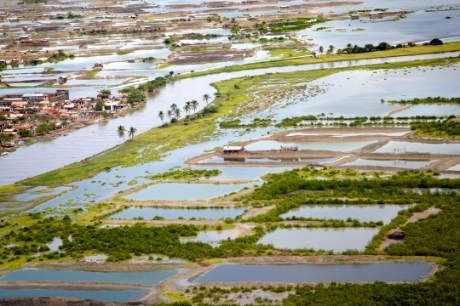
PIFs
Timor Leste – LDCF Project Identification Form (February 2013)
(More information to come)
The project has three main components with the following associated outcomes –
- Improved climate and disaster risk management is enabled through the establishment of a national training and knowledge hub focusing on climate risk and vulnerability assessment, damage and loss assessment, contingency planning among others (Outcome 1.1) and; the extension of national DRM policy and institutional roles to address climate change and disaster risk reduction measures, including assessment methods etc. (Outcome 1.2).
- Climate and disaster risk planning along with its budgeting and delivery is strengthened including the strengthening of district and sub-district Disaster Management Committees and District Disaster Operation Centres to plan, budget and deliver climate induced disaster prevention financing (Outcome 2.1) and; design of community to district level EWS systems for climate induced extreme events (Outcome 2.2).
- Investments are made in climate resilient community-based adaptation measures including community level climate change vulnerability and risk assessments with a specific focus on gender (Outcome 3.1) and; design and implementation of community level watershed management measures to reduce direct physical impacts of high intensity rainfall events in climate vulnerable hotspots along the Dili to Ainaro development corridor (Outcome 3.2).
(More information to come)
(More information to come)
'Joint Monitoring Dili to Ainaro Road Development: Strengthening community resilience in municipalities of Ermera, Aileu, Manufahi and Ermera', UNDP Timor-Leste, May 29, 2019.
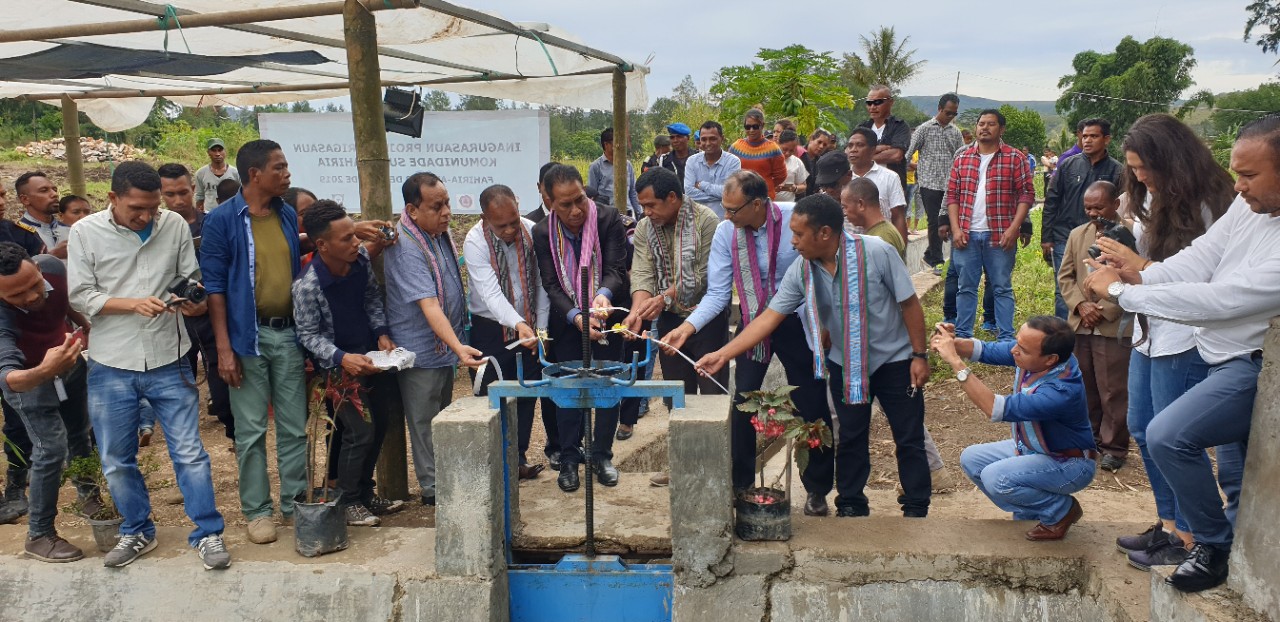




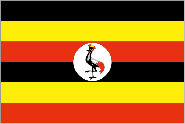

 Press Release - Developing of Impact Indicators for the Ecosystem-based Adaptation Project in Uganda takes off, 31 Jul 2014
Press Release - Developing of Impact Indicators for the Ecosystem-based Adaptation Project in Uganda takes off, 31 Jul 2014